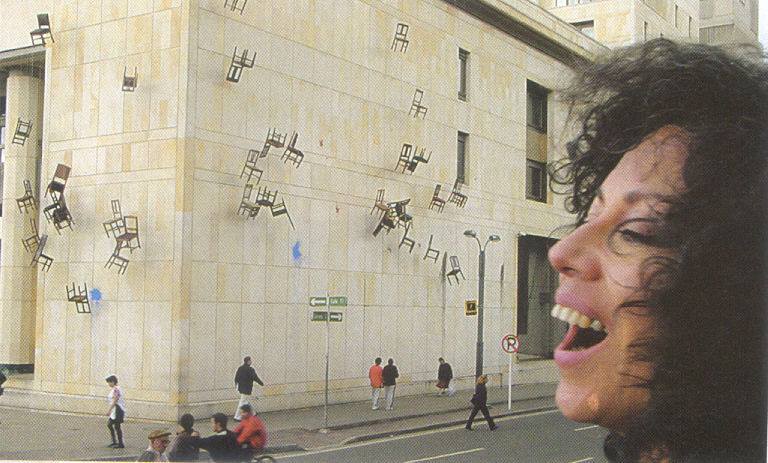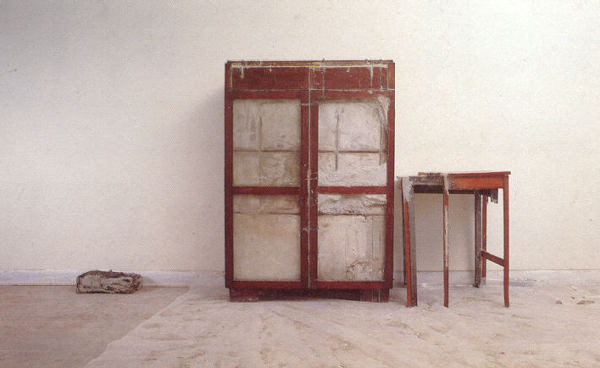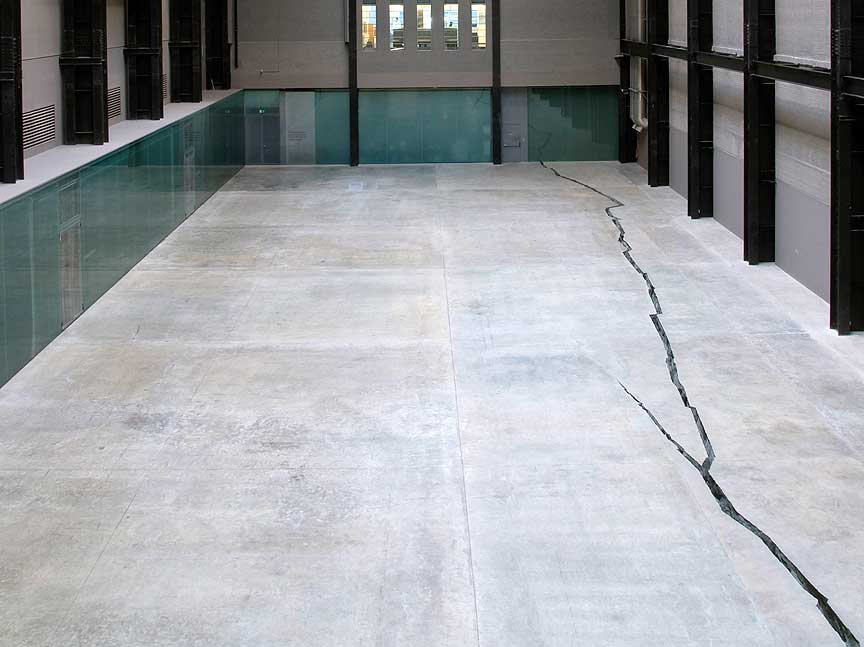- Details
- Written by Ángeles Blanco
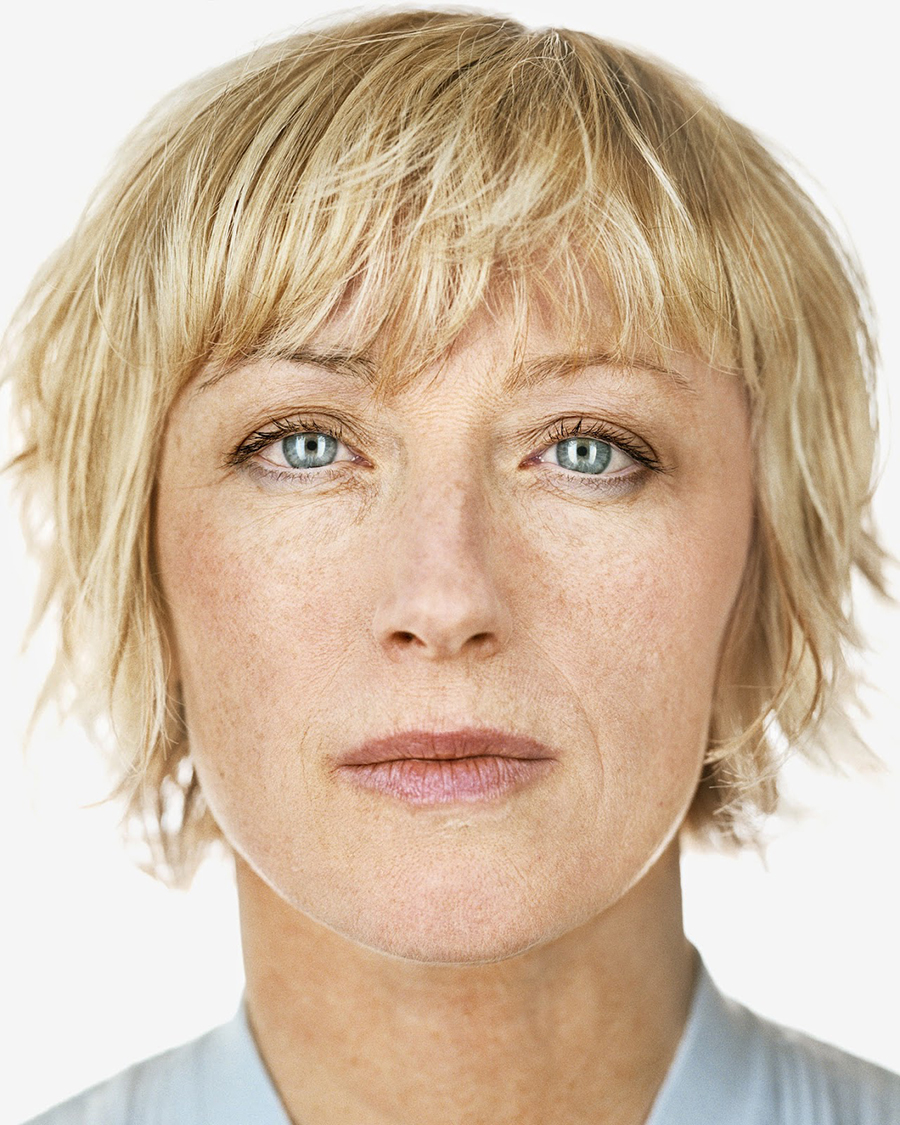
A camera, a prop and herself were all the raw materials Cindy Sherman needed to add her name to the roll call of great photographers of the second half of the 20th century … although she considers herself a visual artist whose medium is photography rather than a photographer per se.
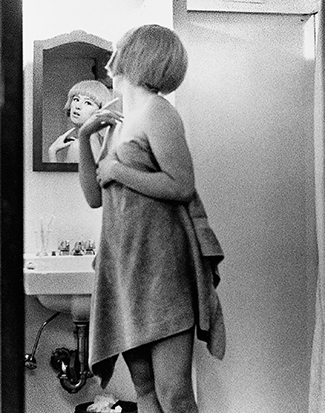
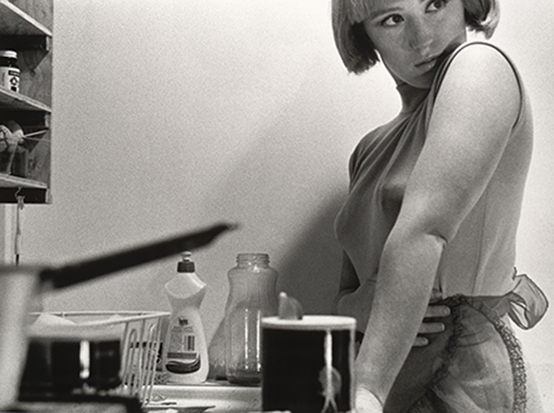
What's unique about this artist is that not only does she use her lens to capture staged images that are striking and highly unusual in themselves but that she uses herself in her compositions and thereby embodies her intended message.
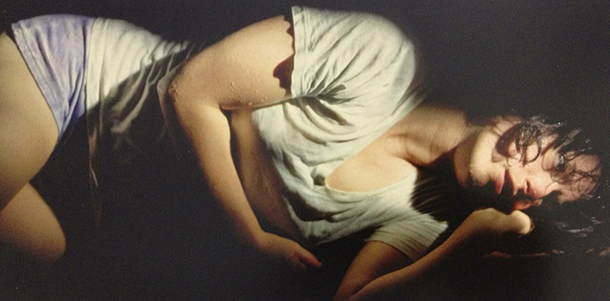
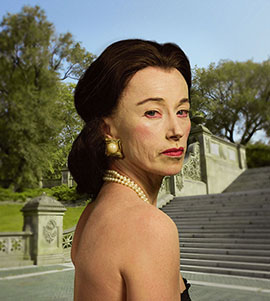
Born in New Jersey in 1954, Cynthia Morris Sherman felt no artistic leanings until at Buffalo University where she began to paint but soon realised that this wasn’t her thing and about which she says: “ ... What can I say? There I was, knocking myself out copying other art but then it hit me that the best and only way I could realise my ideas was with a camera.” And, indeed, it was in photography that she found her calling and has since become one of the most outstanding photographers of her time.
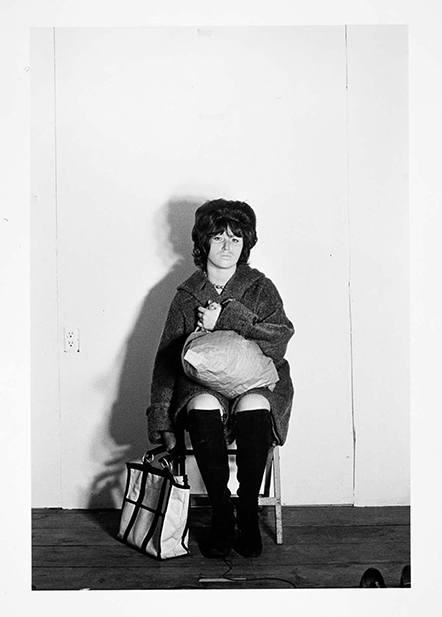
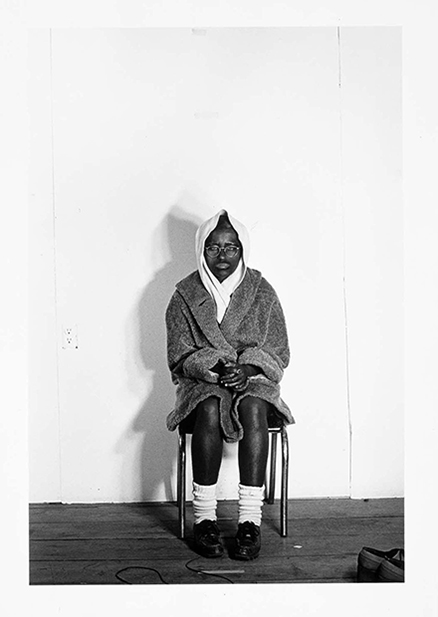
Her earliest photographs, arguably the most representative of her work, soon captured the public’s imagination. Between 1977 y 1980 she produced the "Untitled Film Stills" series of self-portraits posing as typically female clichés from a patriarchal society (hooker, housewife, drug addict, dancer, termagant). These black and white images bring to mind film stills from the 40’s and 50’s. To see them is to recall Hitchcock, Visconti and Truffault, to think how familiar they seem and ask oneself if they might be from an old film noir or Italian Neorealism movie. Since the very beginning, Sherman has never wanted to title her works so they are known only by their inventory number and it is up to the viewer to assign a meaning to each one.
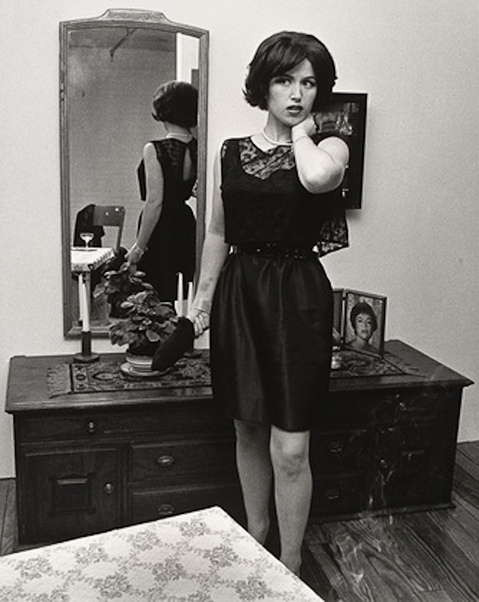
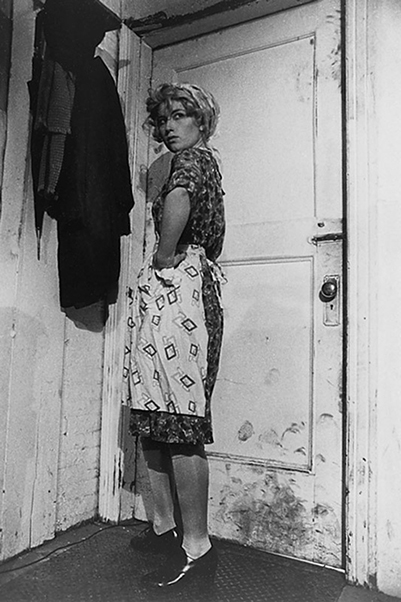
Sherman has no qualms about resorting to artifice, both of expression and in preparation, to sum up a whole narrative in one single picture, leaving it to our own imagination to invent the story behind it.
And, seemingly, it all stems from her love of fancy dress since childhood although she can't tell if that was from boredom, as therapy or simply a fascination with make-up. What happened was that she had started playing with costumes and make-up in the privacy of her own home until, encouraged by her university friend and fellow New York artist Robert Longo, she made the decision to immortalise her "performances" on camera.
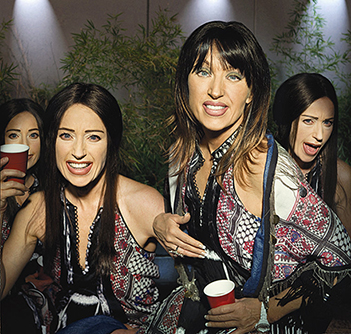
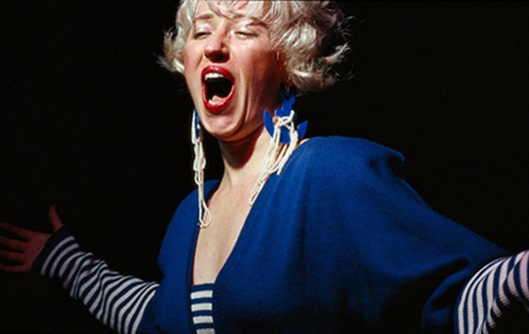
Although she doesn't consider her work feminist as such, her entire oeuvre over the last 40 years does explore myriad female stereotypes. At the start of the 80’s, wanting to draw attention to the prolific use of women as sex symbols in magazines and on television, she produced the "Centerfolds" series, posing as if for a double-page spread in a man's magazine.
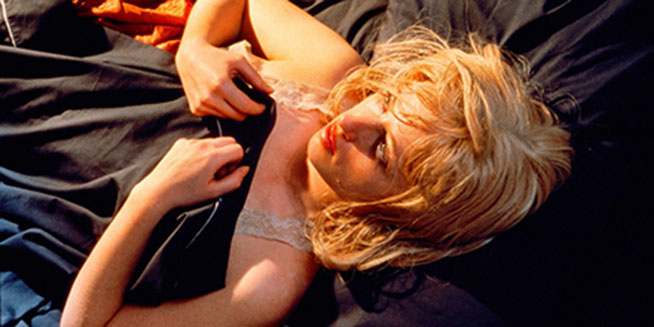
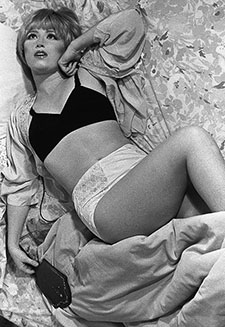
All of her work contains a message which sometimes means her having to resort to images that are gut-wrenching. “Disasters”, “Fairy Tales” and “Disgust Pictures” are pieces that, by the most abject means, (namely entrails, vomit, mutations and horror figures), flag up the changes that our society is undergoing, our descent into a ferocious consumerism devouring itself.
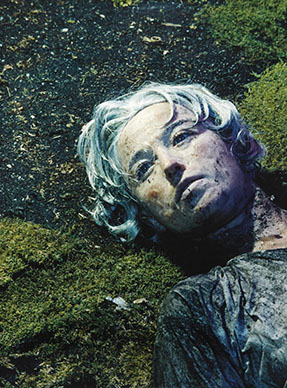
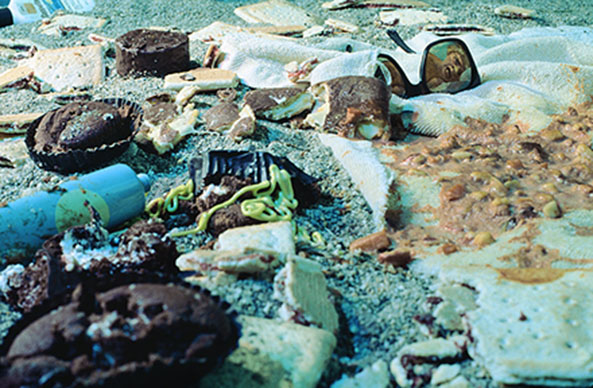
In “History Portraits”, Sherman returns to self-portraiture only this time in colour, and revisiting Renaissance and Baroque paintings, recreating both male and female characters and media darlings of the moment. Her aim is to demystify the personalities worshipped by an obsessed society whether they be masterpieces of the art world or celebrities of stage and screen.
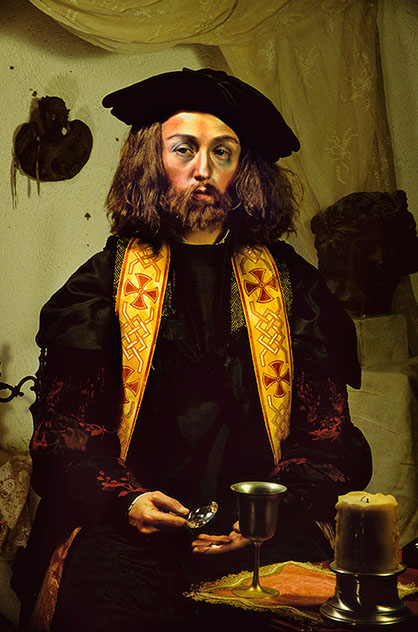
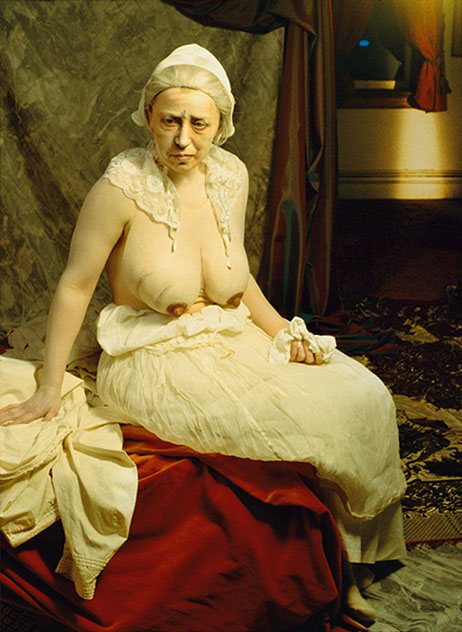
Sherman appears in the majority of her pieces because she likes to work alone and do everything by herself, coupled with the fact that hiring models can turn out to be harder work than it's worth ... she tried it once and it was an experience she won't be repeating. She agrees that it's partly for the freedom working by herself affords her but also possibly down to shyness. Disguising oneself as someone else can be liberating and, although it's her face and body one sees, it's deliberately not the essence of her which is why, if ever an image resembles the real life her too much, she scraps it and takes another. She has also experimented with still lifes in which she doesn't appear. These, however, lack the full force of her other work in which she does. And the truth is that collectors after a work by Sherman want it with her in it and are prepared to pay exorbitant amounts for the acquisition. Her Untitled #96 sold at auction for nearly $4, 000, 000 in 2013 at Christie's in New York.
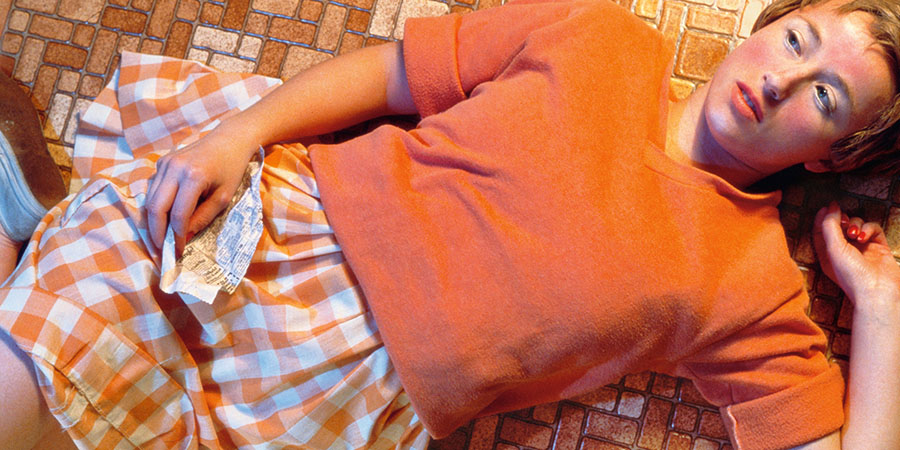
This woman of a thousand faces sees herself as a blank canvas on which to depict diverse iconographies of 'woman' and the result is, in the words of Eva Respini, the curator who organised Sherman's retrospective at the MoMA in 2013, "an encyclopaedia of female stereotypes." Her photographs are not at all autobiographical but they do, on occasion, and by way of artificiality, appear to capture reality in all its crudeness.
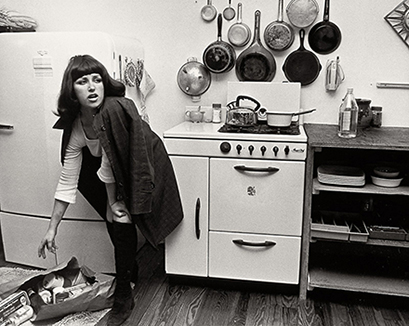
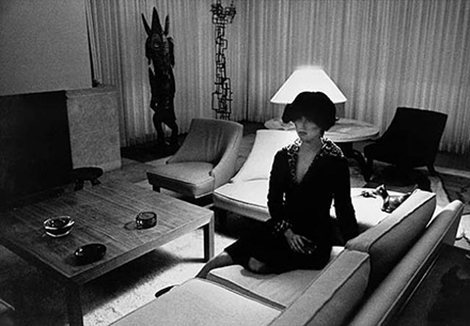
As her work evolves, however, so Sherman replaces herself gradually more and more with prosthetics similar to those used at medical schools. By the time she starts work on the “Sex Pictures” series, there's nothing at all left of her in them and the models appear in her place all twisted, mutilated, oozing liquids and, although we the spectators know that they're only mannequins, we're still left with a queasiness that won't quit, meaning that her aim, that of denouncing whilst depicting male violence against women, has again been achieved.
With the turn of the century, Sherman starts to incorporate digital techniques into her photography, allowing her to create garishly-coloured scenes and multi-charactered montages, as in the “Clowns” series, where it's not exactly clear whether she's parodying herself or not. Framed within opulent settings, the characters brought to life in her “Society Portraits” do not represent real people. The artist has, however, made them look somewhat familiar to us with this rallying cry against the prevailing beauty ideals of a society obsessed with youth and beauty.
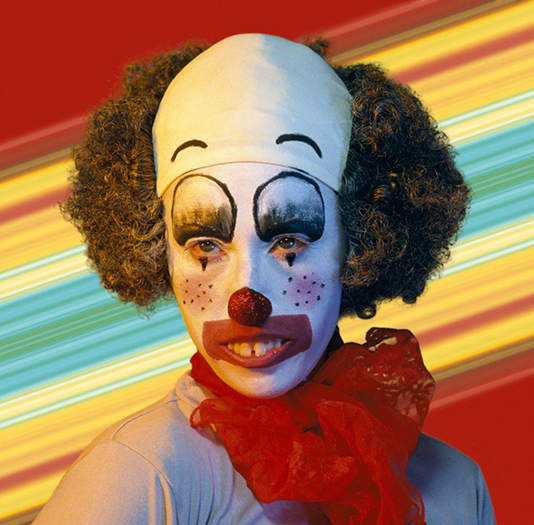
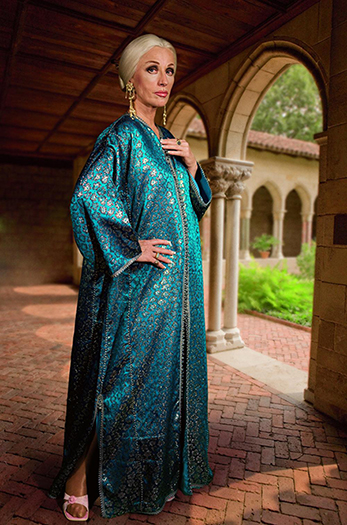
Cindy Sherman, one of the most influential figures in contemporary art for some; egocentric, tacky or pretentious for others; a mockery for others still; but oozing empathy for yet more. Suffice it to say that all you have to do to get a sense of her sincerity is just watch how she holds the spectator's rapt attention in the majority of her portraits.
Or is it a challenge that she engages us with?
Only the emotional response that is triggered within each individual will have an answer and the final say on that.
{youtube}UXKNuWtXZ_U|600|450{/youtube}
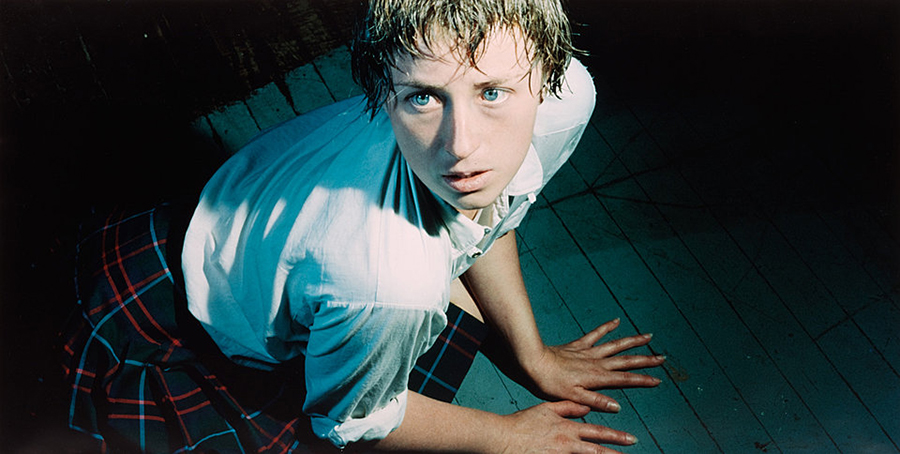
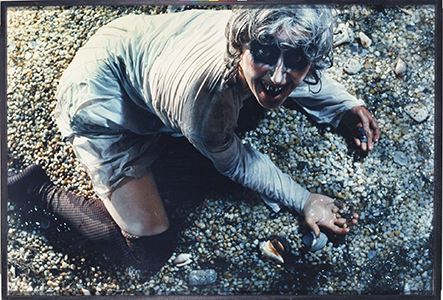
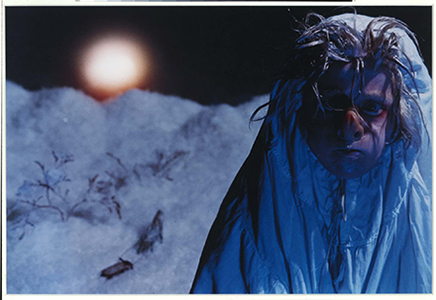
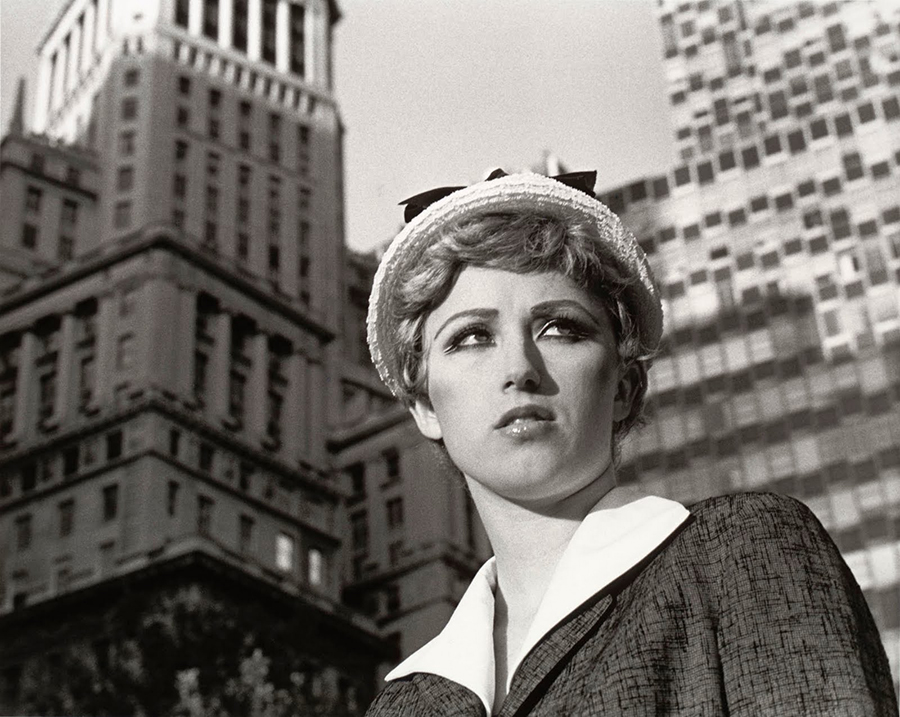
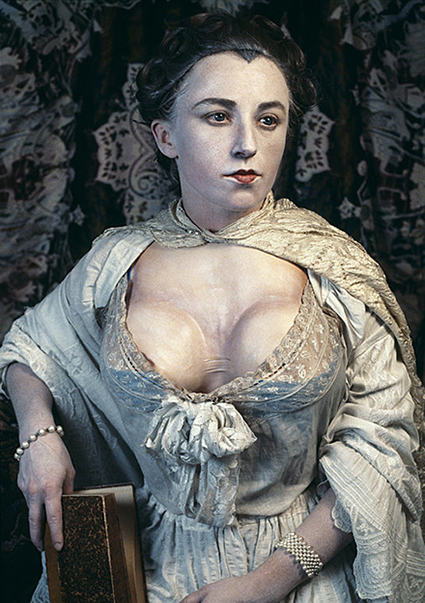
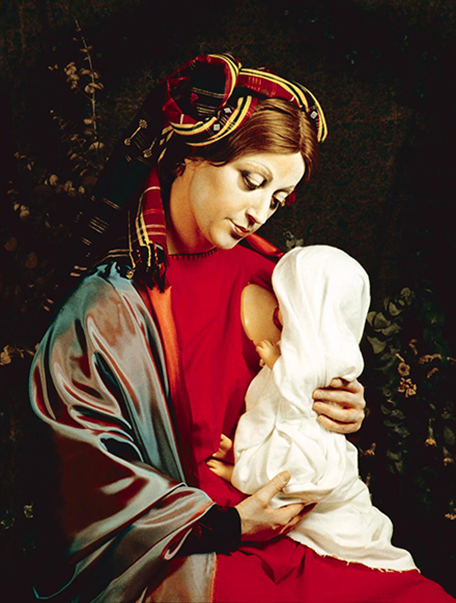
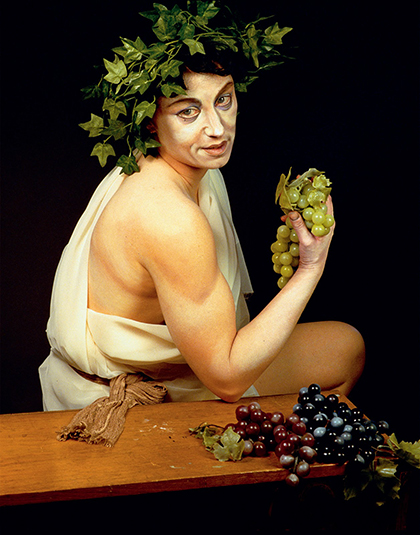
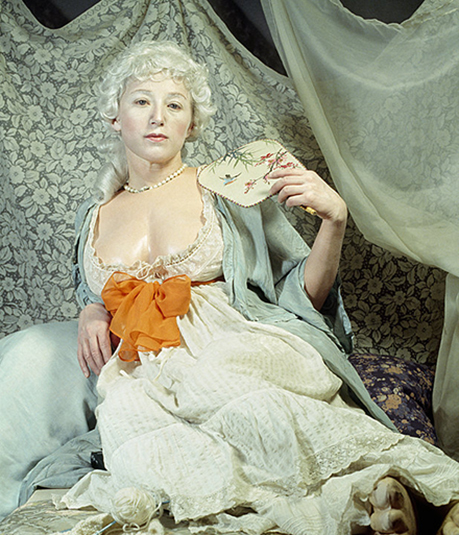
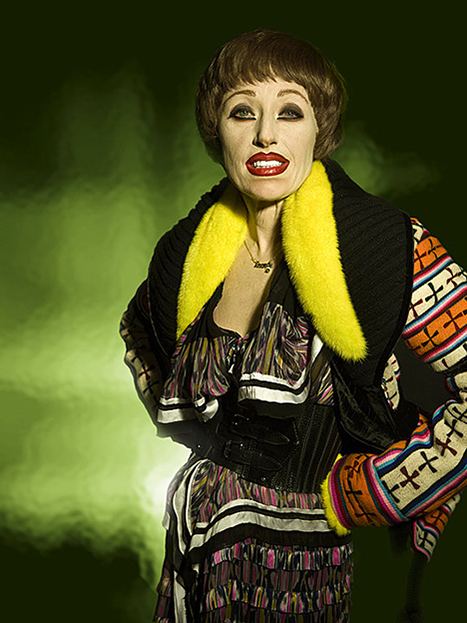
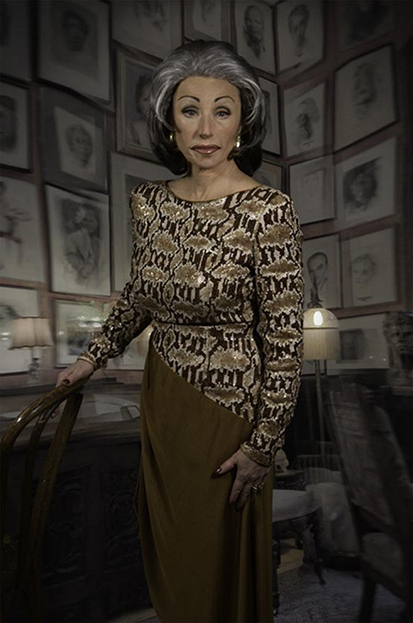
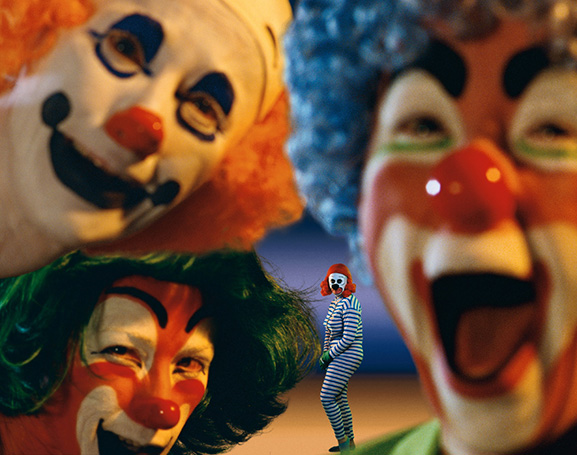
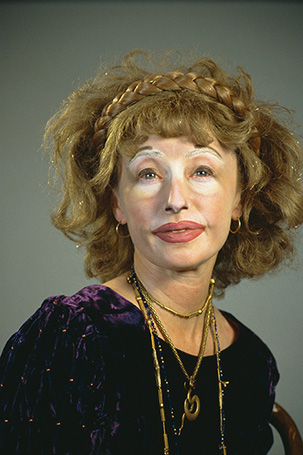
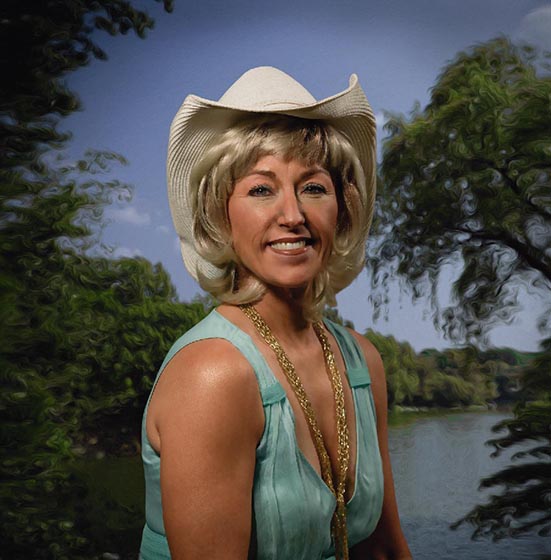
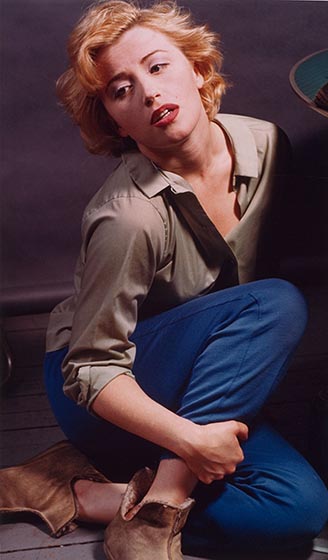
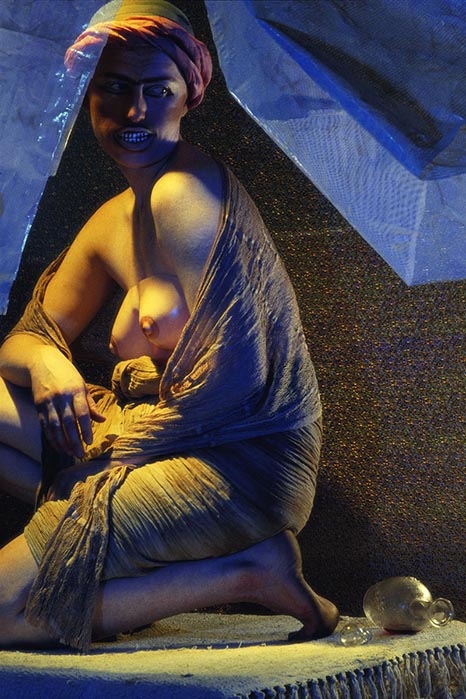
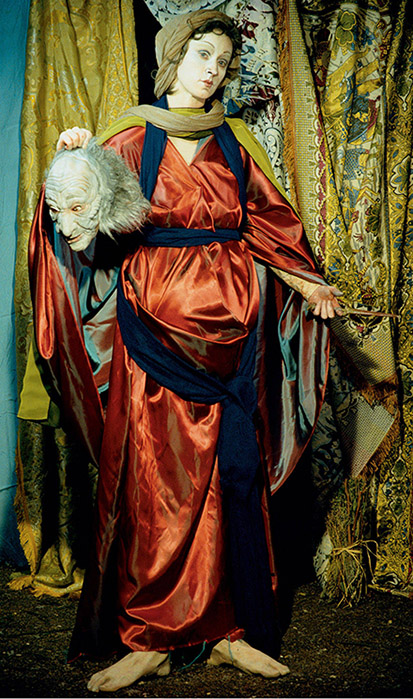
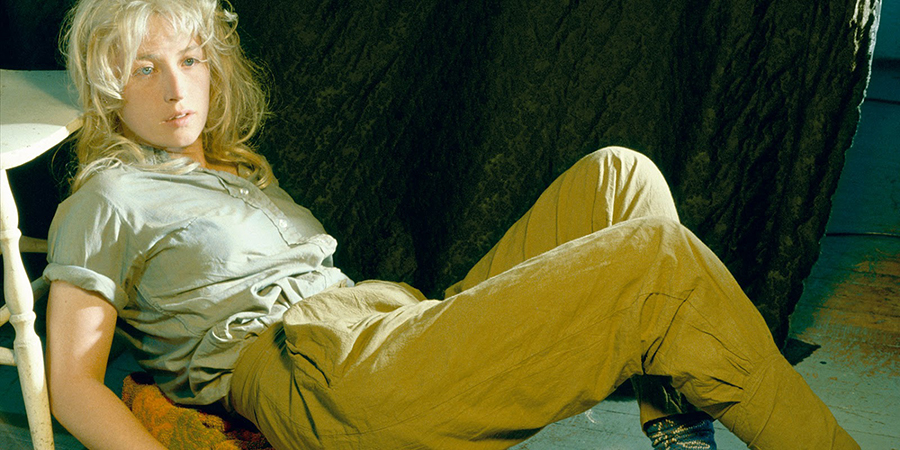
(Translated from the Spanish version by Shauna Devlin)
- Cindy Sherman: Biography, works, exhibitions - - Alejandra de Argos -
- Details
- Written by Marina Valcárcel
|
Author: Marina Valcárcel
Art Historian
|
 |
"Literature is writing from the heart, not the head." Great literature is written from the edge. So V.S Naipaul’s father advised his son, recently arrived at Oxford and before he became who he is today, one of the world’s greatest writers and Nobel Prize for Literature 2001.
Doris Salcedo (Bogotá, Colombia -1958) does exactly this; She sculpts from her heart, her innerness, herself. She is a narrator of pain, the pain of people broken by the unexplained absence of a loved one, by the crude outlines of wounds left by the bodies of those who are no longer here.
This sculptor, or “maker of objects” as she prefers to call herself, lives alongside the unfettered displaycase of terror that exists in Colombia, alongside the political drama and images in the face of which official history remains silent. It’s a not entirely uneasy juxtaposition. Photographs of bodies mutilated by chainsaws, sordid kidnaps and planned “disapperances”. In Colombia there are so many, far too many empty coffins.
What Salcedo does is travel to conflict zones, settle there for weeks or months, however long it takes, sometimes years, alongside the families suffering the loss of their loved ones, of any loved one, a daughter searching for her mother, a mother searching for her little girl.
She never tapes their testimony. She listens, she lets them pace out their emotions, she registers the frequency of fear, peers into the void along with them, slowly sketches the nightmare in their minds, joins in their searches for bodies, knows the textured panic and far-off gaze of a mother beside a mass grave whose child may (or may not be) buried there. Salcedo, however, eludes literal violence, not being interested in revisiting either the tragedy or the concrete facts. She prefers to be a hearsay/hearsee witness. She stores and catalogues these experiences, unassimilated, and inhabits them for a time, aligned with poetry and philosophy, until, from the most artistic hemisphere of her brain, the agony of those left behind can be made tangible.
Her initial original discourse, that spoke of the tension between life and death, has now turned towards the spectral world in which are circumscribed the lives of those undergoing tragedy and those who are forever separated form their loved ones, towards that other world through which relatives of the disappeared wander. For this reason, her sculptures have become more metaphorical, almost abstract, because what starts off from a poetic discourse then opens out as an inroad into the depths of our feelings, whilst forcing the spectator towards intuition, doubt and also the search for answers in her art.
"I don’t believe an image in and of itself, reproduced, dispersed, can stop violence. I don’t think art has that ability. Art doesn’t rescue. I don’t believe aesthetic redemption exists, unfortunately. I think that, as regards art, one cannot talk of any impact, let alone social impact, and least of all political impact; and only a very weak, minimal impact on aesthetics. (...) What art CAN do is create an emotional connection that communicates the victim’s experience. It’s as if the victim’s destroyed life, cut short at the time of the murder, might or could in some way continue within the spectator’s experience."
(Public Reason, Art, Memory and Violence, March 2013)
The Widowed House (1992-1994) Installation. Wood, cement, steel.
"ART CAN’T RESCUE."
Doris Salcedo has lived with women and observed their daily ritual of setting the table and dishing up dinner for a relative, a husband, a father who will never return. A daily rite they perform in the patient hope that the ghostworld of the disappeared will one day return their unburied ones to them.
It is for this reason that she takes the memories of the victims, their voices and their tears into such dear and close account. She turns to everday objects like shoes, tables, wardrobes or chairs, now emptied of their occupants, discorporate, vacated, and through these symbols creates the picturification of absence. As in The Widowed House (1992 – 94), she dismantles the normal what-we-know meaning of furniture. She draws us into another dimension, that of sorrow, mourning, that of a time of waiting in a cold place where tables are no longer the focal point of a family kitchen but are traversed by cupboards that have absorbed cement; where a sheet is made of rose petals; a town square adorned with candles at dusk; a building whose outside walls weep chairs.
Where burial grounds are table tops giving life to life. Where a 167 metre long faultline of jagged frissure fingers its way along the floor of a room in the heart of the art world, of the first world, of capitalism. Where doorframes recall the men who were dragged through them from their homes before being killed at dawn.
The brutality of the 1980s is one of the hardest in Colombia’s recent history, with hundreds of unidentified and unsolved, unnamed crimes. In 1990 Salcedo exhibited the installation piece entitled Untitled/Shows of Sorrow. Neat mounds of perfectly pressed and folded white shirts, each one filled with plaster and every pile pierced through by a pointed metal rod. By their side, six bedsteads, two of them upright, angled against the wall and draped with dried animal entrails. This commemorates the banana plantation labourers killed by paramilitaries, dragged from their beds while they slept: some were shot in front of their families inside the home and some outside. Their wives, eyewitnesses to the massacre, in a patient and painstaking show of sorrow, still launder and starch their husbands’ white cotton shirts, conscientiously ironing and stacking them away, for the day, one day, their husbands return to wear them, in their coffins.
The cold plaster represents the tomb, the laundry protocol yet another unbodied space.
It is in this piece that the secondary witness begins to take centre stage: she who remained behind, the woman who saw her husband being killed and lived on: the witness who survived.
"Violence creates images, continuously and continually. The paramilitaries left us with terrible images. Violence furnishs those unconscionable images of violence. I think one function of art is to counteract that imagery. And in doing so, to balance out the brutality surrounding us in this country.
"To give you an idea, Guernica was bombed, as were many other towns: however, the only one we remember is Guernica, because a pictoral record exists which humanizes the outright inhumanity of the bombing mission.
An image can do that, not by narrating exactly what happened, or giving consolation to the victim or aiding or easing their grief. No, never that, but it does dignify all of us as human beings. And that is a fitting memorial.”
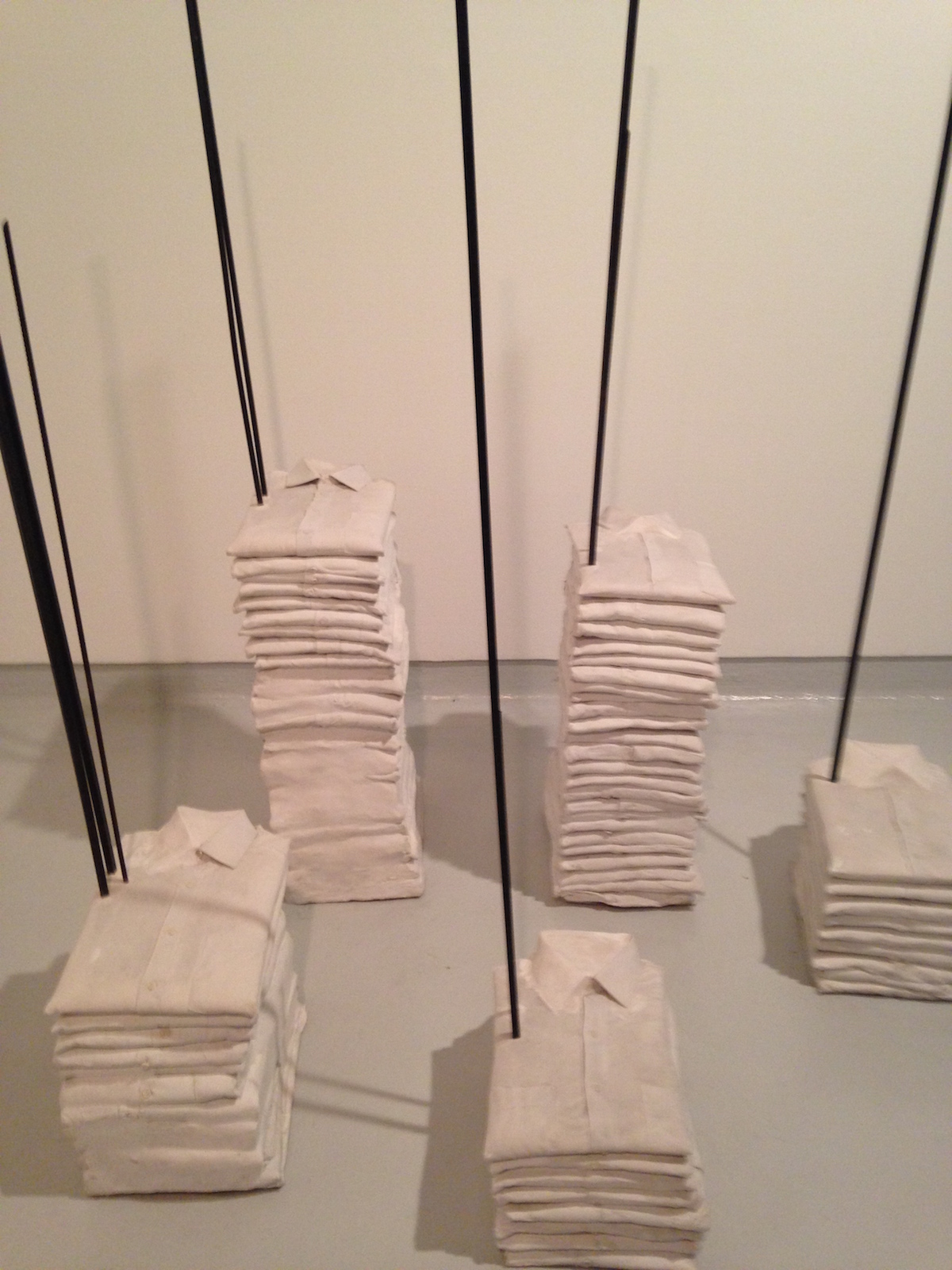
“Untitled” / Shows of Sorrow (1989-1990). Both photographs. Installation. Cotton shirts, plaster and steel.
Doris Salcedo is a woman of robust physical appearance full of contrasts. Her pale complexion frames dark eyes absorbed in the effort required for long hours of work, the heavy burden of drama, the most tragic of testimonies. Her greying hair dwarfs an oval face that, at times, though rarely, is lit up by a wide and generously long smile. But her whole physical self seems designed to match her voice, a captivating voice, very engaging, very musical, with a beautiful Colombian accent and a gentle tempo. She often closes her eyes and settles into a silence that would enthrall whoever’s listening, until she finds the exact term, the right word or the most poetic turn of phrase.
It is vital to her that in every utterance she tries to communicate from the very depths of her soul. Sometimes, in this closing of her eyes, one gets an inkling of the pain her soul feels and the murmur of harrowing testimonies.
When she introduces herself, she likes to say that she has the wrong passport. She’s a woman, born in the third world, she speaks Colombian Spanish, she knows what it is to feel excluded, marginalised, she has experienced racism although not directly. She believes, also, that the rest of the world only sees her homeland as a brutal country that produces little more than violence and narco trafficking.
Readers will be aware that Colombia is a fine country, a country to be admired. Run through, admittedly, by the steel rod of Doris Salcedo’s sculpture. A growing number of Colombians and Europeans, mainly Spaniards, hope that the open negotiations between Colombian Institutions and FARC reach their peace-keeping goals. For this reaosn Doris Salcedo is able to transform those wrong roots y convert them into something positive. She says that being Colombian comes with huge experiential baggage but that, oddly, also makes her free. There are no large museums in Colombia, nor are there any art collections. Knowledge of the history of art comes only from books, which results in it being more theoretical, more wordy, more vague.
Salcedo has only ever worked in Colombia. Her 25 years in a studio would only be conceivable in her birthplace. But she makes the most of her every trip, every contact with beauty and the museums of the world. From Rome she once explained: “On Sunday, after a whole day in the MAXXI, setting up my exhibition, I felt tired and worried. I thought I needed to see Caravaggio before the day’s end. So I walked to Santa María del Popolo church where there are two of his masterpieces: The Conversion of St Paul On The Road To Damascus and The Crucifiction of St Peter. Mozart’s Requiem was playing in the background. What could be more perfect? At the moment I’m working on a new piece to present at the White Cube Gallery in London next May. Without Bernini’s Ecstasy of St Teresa, it wouldn’t have been possible to do that.”
Doris Salcedo outside the Palace of Justice in Bogota.
It’s 2015 and this is Doris Salcedo’s year. On 21 February the Museum of Contemporary Art in Chicago inaugurated a retrospective of her work.
On 26 June the exhibition moved to the Guggenheim in New York and from 6 May 2016 it will be at the Pérez Art Museum in Miami. Few Latin American artists have had such recognition. Salcedo, also, was the eighth artist to exhibit in the Turbine Hall of the Tate Modern and, after Juan Muñoz, only the second Spanish-speaking artist selected to do so.
In 2010 she was awarded the Velázquez Visual Arts prize. Over the last decade, her work has been exhibited in the MoMA New York, the Pompidou Centre Paris, the Art Institute of Chicago, the Reina Sofía Arts Centre Madrid and at the XXIV Biennial in Sao Paulo, Documenta 11 in Kassel and the VIII International Biennial in Istambul.
In the words of Carlos Basualdo, one of seven curators at Documenta 11, Salcedo’s work is key in that it represents a series of useful interventions for the history of contemporary sculpture. "Her oeuvre covering particular events is both of the moment and universal despite its obvious connection to events in Colombia.”
NEW YORK AWAKENED HER INTEREST IN SCULPTURE’S POLITICAL DIMENSION
Doris Salcedo first studied painting and, for a short time, was attracted to the theatre before devoting herself entirely to sculpture in the 80s.
In 1984 she completed a Fine Arts Master at New York University where she discovered the work of Joseph Beuys: "His work revealed to me the concept of social sculpture, the possibility of shaping society through art." Studying Beuys’ work, and her own experience being a foreigner in the city, awakened her interest in sculpture’s political dimension. On graduating, she returned to Bogotá to teach sculpture and art theory at the National University of Colombia.
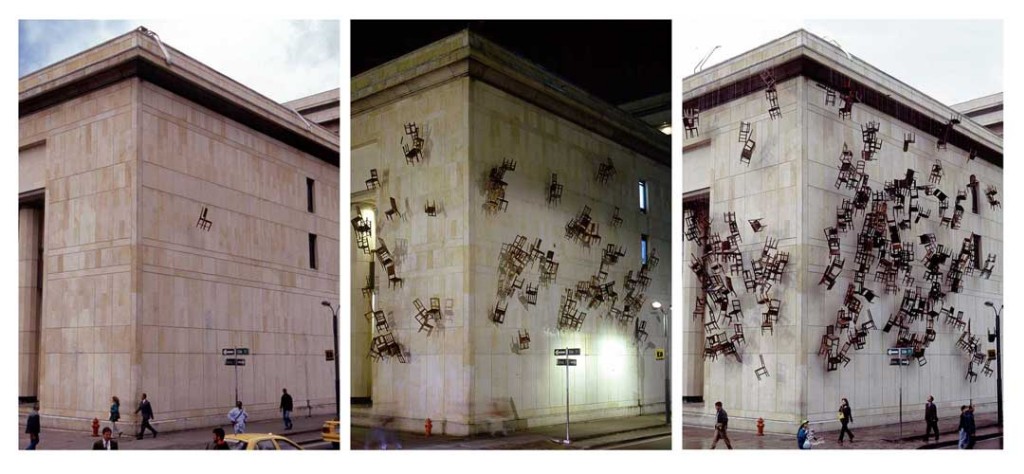
"TIME IS THE ESSENTIAL ELEMENT OF THIS WORK"
Shortly after returning to Colombia in 1985, the Palace of Justice was stormed by M19 guerrillas. On the morning of 6 November, she was working only a few feet from where the massacre happened, a massacre which changed the message that Doris Salcedo wanted to get across about Colombian reality. In 2002 she put on an installation at the Palace of Justice which comprised the gradual and meticulously staggered hanging of 280 chairs from its walls. This lasted 53 hours, the same duration as the seige and its start coinciding with the exact time the first victim was killed.
A collaborator on the day says this about how the installation happened: "The limits of violence seemed to be lost at that time in Colombia. The idea was to follow the timescale of the seige. We started at 11.35am because that was the time they killed the first person. We had various objects being lowered down the facade at different intervals and rhythms. Synchronisation was very important. And time was the essential element for this piece that would last just 53 hours, the same duration as the seige. The running order was between 300 and 400 pages long. Each sheet set out how and for how long each specific pattern was to be achieved. That day we did a performance under Doris’s direction. She was outside, down on the street, directing us from below and we were upstairs, making it all work. Everything was labelled and there was a numerical order we had to follow, like with a musical score you read and play. I was a young boy when it happened in 1985. My memory is very hazy but, through this piece, it became part of my biography or of my biographical memory.”
"ONLY POETIC LANGUAGE CAN ENTER THE ENVIRONS OF EVIL"
The titles of Doris Salcedo’s work could arguably be classed as poetic. Skin Deep, The Widowed House, The Orphan’s Tunic, Silent Prayer, similar versions of which can be found in the poetry of Paul Celan. Salcedo evokes his poems and quotes them often, for instance Shibboleth and In Eins. Paul Celan, a Romanian of Jewish descent born in 1920, was one of the great post-war poets. When the Second World War broke out, he returned to Romania where he was sentenced to hard labour while his parents died in a concentration camp. His verse conjures up extermination.
"Celan believed that only the language of poetry could help us to enter into the environs of evil, into the vicinity of absolute injustice (...). Because only by means of intuition and metaphor, only through the intensity of a lyrical image, could we ever hope to understand a crime.”
These words by Fernando García de Cortázar describe the link between Celan and Salcedo, between the evidence of Auschwitz and Colombian crime. From 1965 on, Celan was admitted time after time to a psychiatric hospital where he wrote in Hebrew and, ultimately, in 1970, took his own life by leaping into the Seine.
Shibboleth (2007-2008) Turbine Hall, Tate Modern, London.
Shibboleth (2007-2008) is perhaps the most universal and devastating of Salcedo’s output, part of the Tate Modern’s cycle of projects wherein artists such as Louise Bourgeois, Anish Kapoor or Olafur Eliasson were commissioned to exhibit their work in the Turbine Hall. Shibboleth is a project on a monumental scale. It is a linear crack 167 meters long and 70 centimeters deep that rips across the floor of the Turbine Hall.
The monumental nature of the work as regards its interaction with architecture is there to see. A collaborator explains: "There was a tiny crack in the floor at the Tate which Doris noticed on her first visit and decided to make this the source of this piece. Every centimeter was hand drawn by Doris. We researched cracks. We examined the edges, the inside walls above ground, in cement, on buildings. We looked like a crazy gang in the street staring at cracks in walls and floors. The next step was to figure out how to construct a readymade crack and export that to London. We decided on a metal structure, similar to how a brick is made but in the shape of a rock. We moulded the steel following the exact shape of the stone, then poured in the cement. The final result was the cast, with steel mesh embedded in it and its opposite twin.
We made 320 meters worth of cement because we had to do both faces of the crack. Everything turned out almost exactly as we’d planned but the image, the result, is something you can’t even begin to imagine until you see it.”
With this piece, Salcedo wanted to create a metaphor using biblical legend to highlight the exclusions faced by those of the third world as opposed to those of the first.
"I come from Colombia, a country full of the ruins that are the legacy of wars, imperialism and colonialism. That dictated my perspective. I am a third world artist. It is from that perspective, from the victim’s perspective, from the perspective of defeated nations, that I look at the world. For this reason my work doesn’t represent “something”. It is simply an insinuation of something. It is about trying to bring into being something that is no longer here. In this sense it’s subtle.”
PRONUNCIATION, A MEANS TO DISCRIMINATE
Shibboleth is the Hebrew word for "ear of corn" and plays a crucial part in a story from the Book Of Judges . Chapter 12 tells the story of two warring Hebrew tribes which culminates in the genocide of 42,000 members of the Efraim tribe after crossing the river Jordan in search of salvation. The Efraimites were distinguishable to their enemies by their inability to pronounce the “sh” sound and gave themselves away by mispronouncing this staple of their diet as Sibboleth with an “s”. So the word serves as a metaphor for the exclusion of an outgroup by ingroup speakers of any one particular language. And furthermore for segregation and borders.
“IT’S NOT THAT BIG A DEAL. IT’S JUST A SPACE. IT’S NOT LIKE BEING IN ST SOPHIA CATHEDRAL”
"When I went to see the space before thinking about the piece, what struck me was the attitude of the people there. Everyone was looking up and feeling that it was an astonishing size. I just thought: “It’s not that big a deal. It’s just a modernist, industrial space. It’s not like being in St Sophia cathedral or dwarfed by the pyramids in Egypt.”
But people seemed to be under that impression which I thought was incredibly narcissistic. What I wanted to do was turn this perspective on its head so instead of looking up, I’d force them to look down ... I wanted to inscribe something chaotic on this modernist and rationalist building, something that made the space negative. Because I think there’s a bottomless gulf that divides the human from the inhuman, the whites from the non-whites. I wanted to highlightthis rift which I thought was best observed in the history of modernity. When one reads about Modern History, one would think it was a uniquely European event. And the idea of colonialism, as well as imperialism, is marginalised, to say the least. I wanted this racism narrative to take centre stage because I think racism is the untold dark chapter of Modern History. So I wanted this crack to split the building in two and rip through it almost like a non-white immigrant barging into the monotony and consensus of white society.”
With this fissure, Salcedo means to take us to the centre of the rupture of all things ordered, the whole gamut of fragmentations: social, racial, aesthetic, sexual, geopolitical, cultural. It’s the antithesis in meaning of those walls constructed in recent history all over the world: the Berlin Wall, the concrete ‘barriers’ annexing the occupied Gazza Strip and West Bank ... With regard to its artistic significance, the Shibboleth crack means “too many things”, as Borges remarked, when he referred to it as an archetype that has accompanied humanity for millennia.
And now would be a good time to return to the poet Celan. There are too many words resonating deep inside us on a barely-there faint Hebrew line between Shibboleth and Yad Vashem, the Holocaust Museum in Jerusalem: the exodus, extermination, the final solution, the image of the cattle trains supplying Jews to the concentration camps, torture, cold, the prisoners’ emaciated bodies, Buchenwald, Dachau ... The 27 January 2015 marked the 70th anniversary of the liberation of Auschwitz.
The Israeli architect Moshe Safdie rose to the challenge of designing a new Holocaust History Museum in Jerusalem which was inaugurated in 2005 and was awarded the Prince of Asturias Concord prize in 2007. Arrow-shaped, Yad Vashem pierces the hill of memory as would a splinter in our thumb: it doesn’t budge, a tiny little black dot, encouraging us to extract it from under our skin with tweezers. But no tweezers exist that can easily remove Yad Vashem once seen and in our head. Its design, like a cement ship in the form of a prism that juts into the mountain only to jut out as a huge skylight onto the Isreali sky, constitutes one of the most awe-inspiring impressions a museum can offer. The feeling of oppression under the triangular roof, the gentle slope downwards of the floor and then its gentle rise upwards, towards the exit, towards the light, the absence of windows, the choice to only use bare reinforced concrete, grey and cold, throughout the museum, create a sensation of claustrophobia and oppression similar to what one would feel in the underground passageways of a mine.
Thesame as the Turbine Hall in London, the cement floor of the museum is broken up, as if by an earthquake. In Yad Vashem, these gaps are actually glass display cases one can look down into, much as Salcedo forces us to do with hers in London, if we’re looking for answers. In Jerusalem, the shiver that runs through our body only chills more on discovering that those glass covers are really cases full of hundreds of children’s shoes from the Nazi Holocaust. A “Defiances” (Atrabiliarios 1992) that predates Salcedo’s but still talks of the same universal torture, only this time somewhat closer to the Mediterranean Sea.
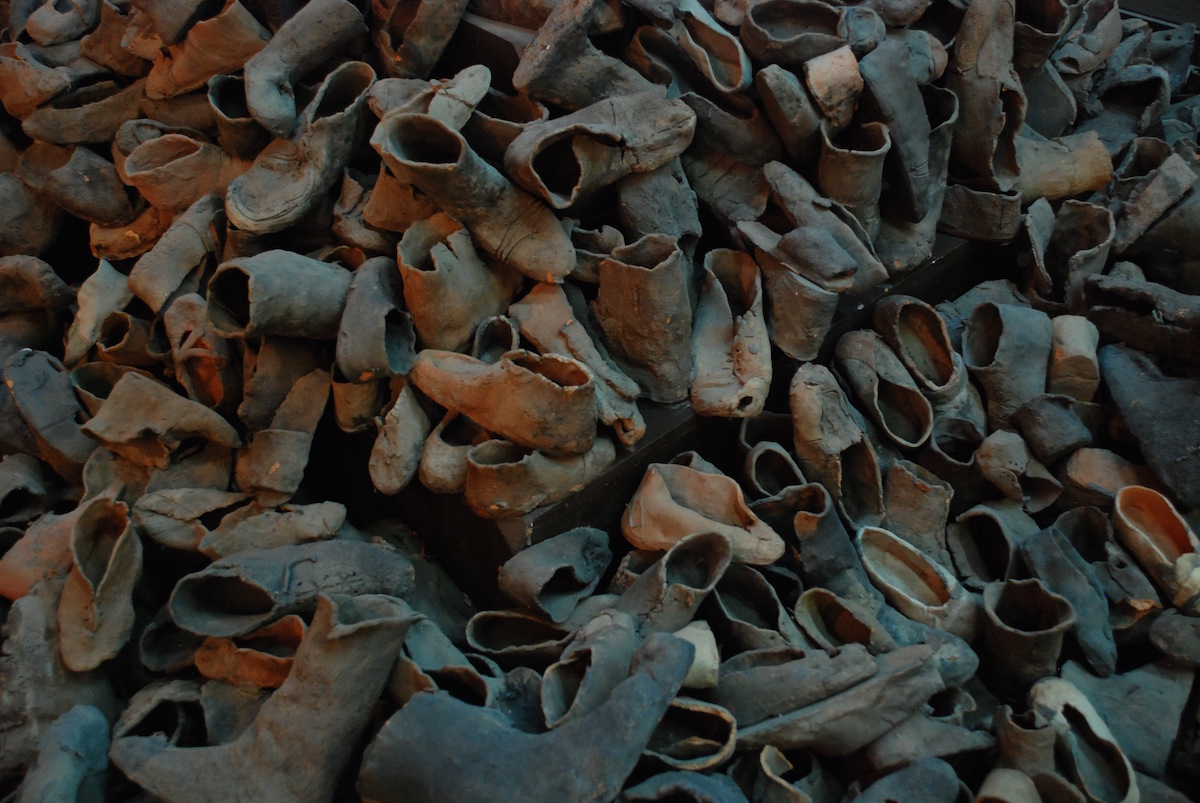
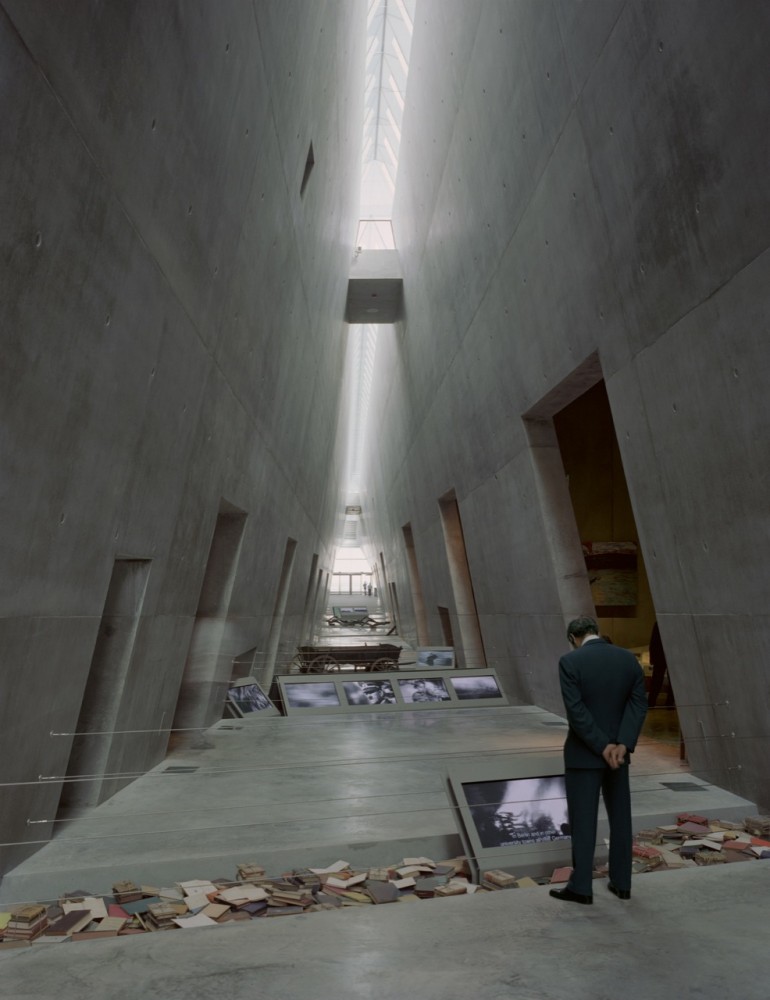
Yad Vashem, Holocaust History Museum, Jerusalem
For “Defiances” (Atrabiliarios) 1992, exhibited in the White Cube gallery in London, Salcedo spent nearly three years listening to relatives of the disappeared: that cruel politically motivated phenomenon of forced disappearance and the hole left by the victims’ belongings. She studied the way in which families related to these objects, now souvenirs, hoping their owners will return for them, unable to let them go.
Relatives donated shoes the victims had once worn, and these were Salcedo’s catalyst for “Defiances”. Her intuition inspired her to bore twenty little alcoves into the wall and place the shoes inside. “Colombia is the country of unburied death, of the unmarked grave.” So a pair of white shoes, that might be a bride’s from her wedding day or a Sunday afternoon tea-dance, are displayed in a tailormade tomb, shrine-like, and partially obscured from our view by a thin membrane of animal skin roughly sutured to the wall with black surgical thread. Wound, fissure, burial, exposure ...
As Salcedo explained at Harvard, “When the specator gives the work a moment of silent contemplation, in that moment and only in that moment, is when the emotional connection happens ... Art has enormous power: the power to take back control of life, of humanity, of life that has been profaned.”
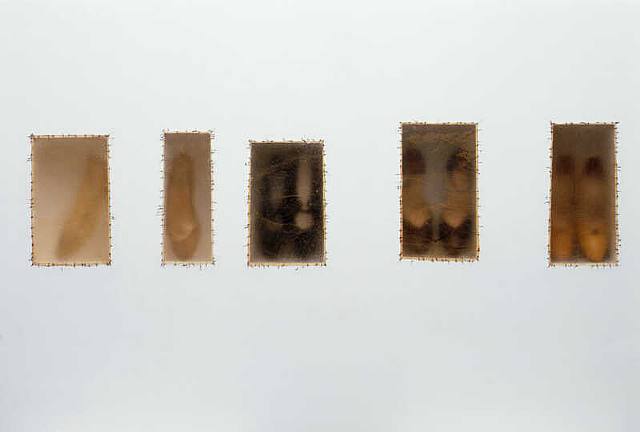
“Defiances” Atrabiliarios (1992) Installation. Shoes, animal skin
In 1997, and within the Unland series, came The Orpan’s Tunic. Behind this work is the story of a six year old girl. Every time Salcedo went to visit her, the little girl was wearing the exact same dress. Some time later she learnt that this was the dress her mother had handstitched for her and the one she was wearing the day her mother and father were killed in front of her. Here, the public think they are seeing an everyday object. A table. However, it soon becomes apparent that it is in fact two different tables, joined, with the smaller brown half slotting under the wider white one. Up close, one can see the tiny holes through which human hair has been painstakingly threaded, ending in a border where the hairs are directly threaded into the wood. Salcedo’s work is always meticulous, time-consuming, highly detailed. ”Of course it’s insane, it’s absurd – comments an assistant to Salcedo – And it’s an enormous waste of time and energy. A team of 15 people worked on these pieces every day for 3 years. It reminded me of Paul Celan when he said: “It is only the absurd that shows the presence of what is human.” But here too it had a connection with the squandering of lives. “It was the peak period of paramilitary massacres in Colombia. It was my way of showing how life could be wasted. But at the same time, how something poetic could come out of it, some proof of our human presence, of the victims’ humanity, of the fragility of life and the brutality of power. I think everything was here in this gesture, sewing hair through wood.”
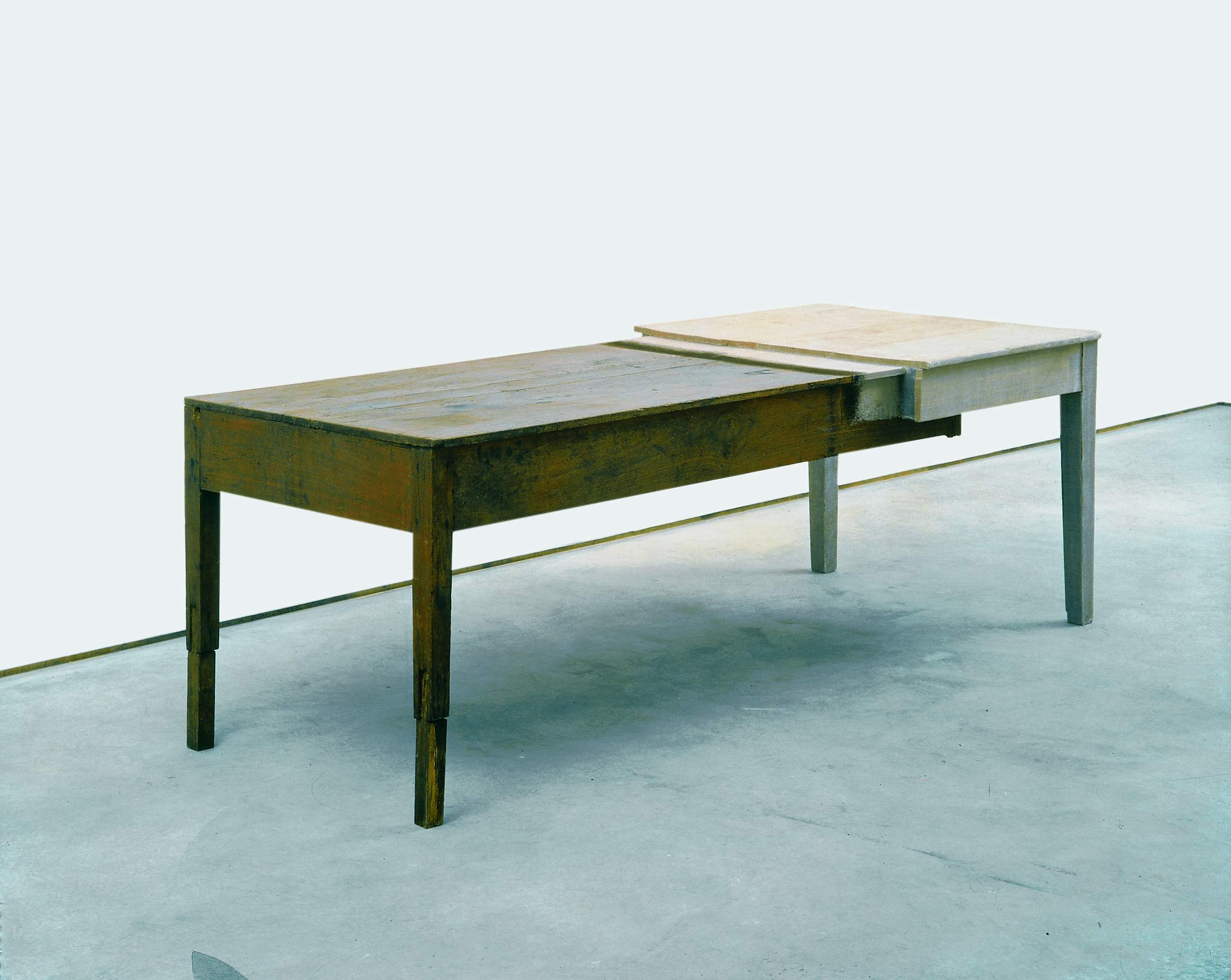
Unland. The Orphan’s Tunic (1997) Wood, human hair, silk.
Skin Deep (2012-2014) is a huge swathe of material in shades of ochre and red, its soft folds falling on the floor of the White Cube gallery, flooding it almost, like a soft-waved sea. That’s all. Except silence. As always happens with Salcedo’s work, after the initial impact, after the query and the doubt, we see that the fabric is made up of millions of rose petals, sewn and knotted together one by one with surgical thread. An efemeral work, it will ultimately perish as a rose will. A video explains the arduous process involved for those petals, the chemical process of immersion in a glycerine and collagen solution to give them the malleability and durability necessary for them to be stitched, one by one, into pieces that would then be ironed in gigantic, custom-made presses. Despite all this, the fragility of the material is total. Salcedo explains how this fragility, which almost makes it untouchable, which requires one to breathe more softly near it, all this is intimately related to its meaning. In order to dignify a person, it’s vital to return to beauty. Transforming pain into beauty is, however, quite perverse.
Frequently in Colombia, the body becomes a battleground. Skin Deep is the hommage Salcedo pays to the body of a woman, a nurse by profession, tortured, killed and finally cut into pieces. The offering of millions of petals sewn together, the delicacy, the wound, the life of a nurse stitching up wounds with a needle, a rosy complexion, the surgical thread, the tweezers, the pain, the bruised skin, the superimposed petals, the flesh, the rose, the vulnerability, death. The skin, a mutilated, disjointed body being put back together is something we don’t look at, we show respect. It is one woman’s subtle tribute to another, in women’s language. To hear Salcedo talk of this work is to hear her voice soften and slow, to see her eyes close on the horror and sorrow, til she finds the most respectful words: “ In the same way that we don’t look at a wound.”
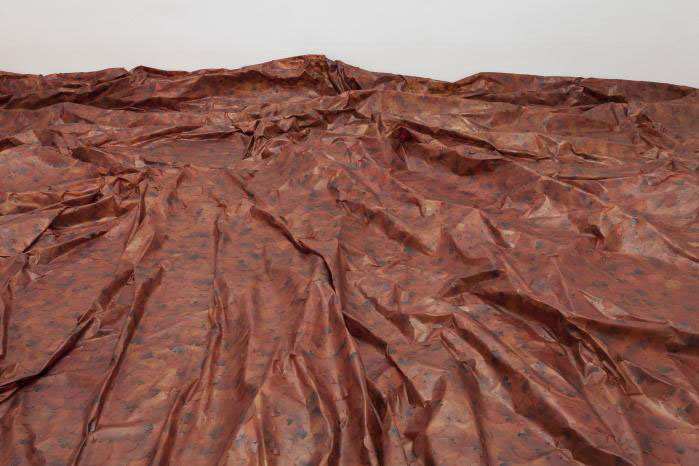
In July 2014, Salcedo received the Hiroshima prize, an acknowledgement awarded every three years in remembrance of the victims of the first atomic bomb. This prize honours those artists whose work is in pursuit of “the search for permanent peace”.
“What is dying in an attempt to cross the border? The word that defines my work is impotence. I am completely impotent. I feel I’m responsible for everything that happens and I always get wherever it is too late. I can’t give anybody back their father or son. I can’t solve any problems. I can’t do anything. It’s a lack of power. But as someone who lacks power, I stand up to those who have it and use it to manipulate lives.”
- Doris Salcedo: Art as a Scar - - Alejandra de Argos -
- Details
- Written by Elena Cué
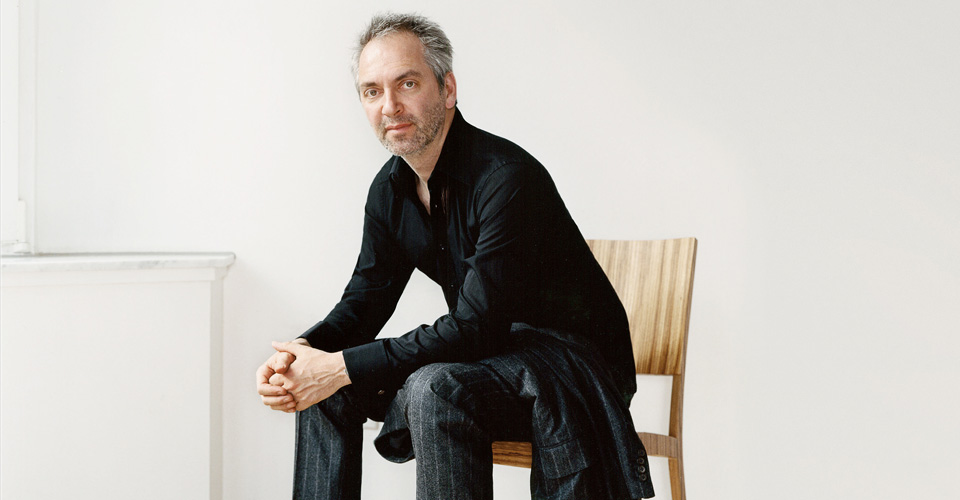
Berlin. On a sunny day, strong rays illuminate the studio where Thomas Struth (Geldern-Germany, 1954) meets with me to begin our conversation. This artist with an intense and precise gaze is one of the most interesting photographers of our time and belongs to the prestigious Dusseldorf Academy.
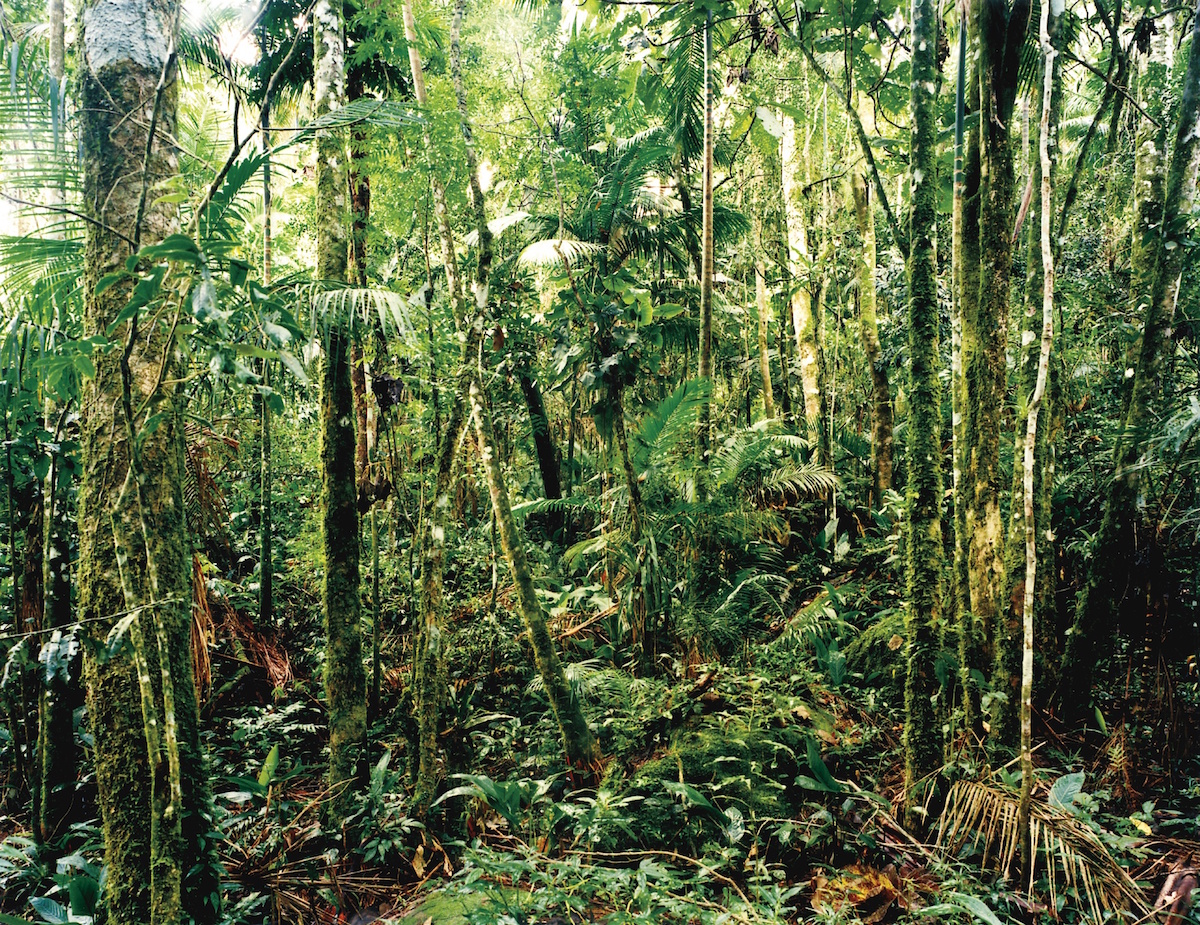
It appeared, I think, when I was almost 13 or so. Because it was not really a calling to want to be an artist, but I started to like drawing and using water colours and oil-chalk, and I painted my first oil paintings when I was 14. I had a room at my parents’ house, maybe 8 square metres or so, really a very small room. But I just liked to do that and I always loved music.
I started to learn the clarinet, then, when I was 14 my music teacher told me I should switch to saxophone and he started a school jazz band. So I played in the school jazz band for three or four years and then there was a time of pop music. Anyway I didn’t think about whether I wanted to be an artist or not, because that just wasn't the question. I didn't see myself becoming an artist, which I think was good because I didn't bother thinking about the future, I just did what I wanted to do at the time.
It’s important to note that you were the first artist to receive a grant to be in residence at the PS.1 Studios in Queens, where they dedicated an exhibition to you. Was this your first one?
Later on, you were a Professor of Photography at the University of Art and Design in Karlsruhe from 1993 to 1996, after already establishing yourself as a well-known artist. What was this teaching experience like?
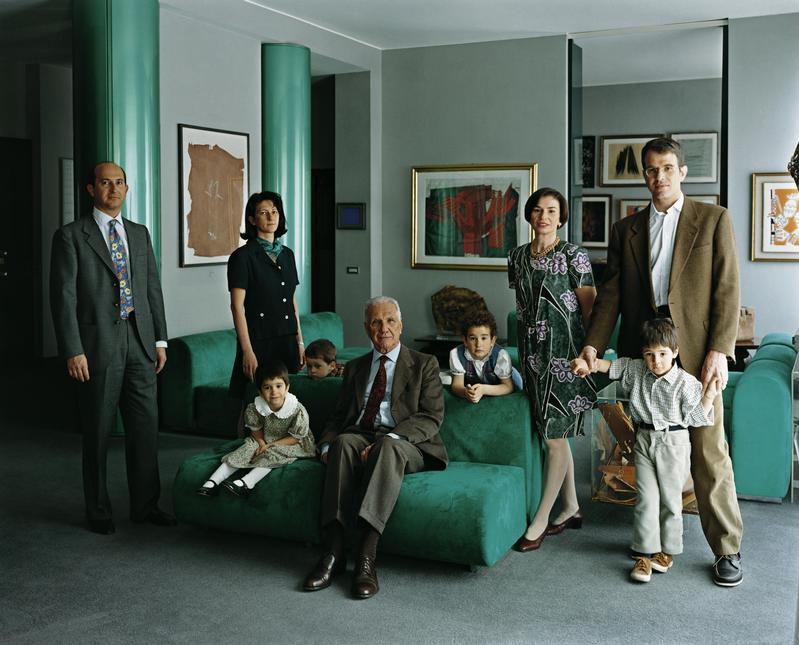
I think I learned a lot about photography. He had developed an idea with new patients who came to look for help, where they'd tell a story and create a narrative about what they believed they suffered from and what they thought the cause might be. He asked them to bring 3 or 4 photographs to show what their family life was like. When we met and got to know each other, he found out that I was a photographer with a darkroom and the tools to print. So he told me that it was a dream of his for a long time to collect pictures like this and bring them together and work with them and make an exhibition at the institute where he was working. I said yes, I was interested, so we collected these photographs from about 35 people. Everyone brought about 2 or 3 photographs, so we had 80-100 pictures and I reproduced them all, made them all the same size and all in black and white, because before they were all in colour and I wanted to make them more comparable.
In the beginning, it was black and white because I couldn't afford to pay for the materials myself. I didn't have a colour printer. I didn't have the money for colour film, or the development. But the contact sheets and black and white were fairly inexpensive, so that had a very simple reason. Later I started to work in colour, but you don't look properly when you look at scenery in colour. When you photograph in black and white, you look at things in a different manner because you think more of cubic volume and light and shadow and stuff like that. You have to ignore the colours; you judge everything only by the density of light. Whereas with colour, of course you only look at the colour. You look at one scene and there's a bright red and then there's a bright yellow. You would find the attractive point in the picture where there's a dominant colour. When you have a blue sky and you photograph in black and white, the blue sky doesn't matter. If you have it in colour, the blue is dominant and it's an intense element in the photograph. Because when you look at it, the sky, it's air. But in the photograph it's a blue colour. It's blue paper. So it's a different thing. That's why, when I want to make a print now with the blue sky, my aim in the printing process is to make sure it looks like air. And not like blue paint. It's a very fine line.
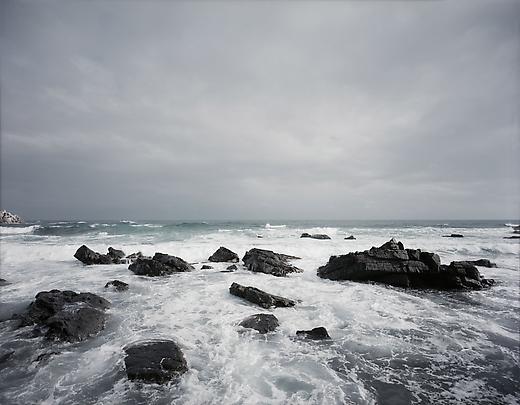
Your photographs of urban landscapes in Unconscious Places seem rather objectified. Do they have any association with “Non-Places” by French Sociologist and Anthropologist, Marc Augé?
No that was not what I wanted to do. Everything is created by man. What I wanted to say with the title Unconscious Places is that when people design a building like this one or the curved one, the architect and the people who pay for it - or give the permission for it - believe it has to be contemporary. But beyond all this, it unconsciously creates an atmosphere that radiates to the people. I mean, the people who live over there in those buildings will look out at that building all the time when they look out of the windows. And the building is much uglier on that side there! So it's something that has a strong unconscious element, which matters a lot for the atmosphere for the city and the people who live in that building. Because the architect doesn't live in that building… They live somewhere else. Maybe in an old farmhouse, I don’t know, maybe in a pre-war building that is nicer. And maybe it has something to do with anger. So all cities are filled with this underlying unconscious, atmospheric energy. That was something I wanted to highlight.
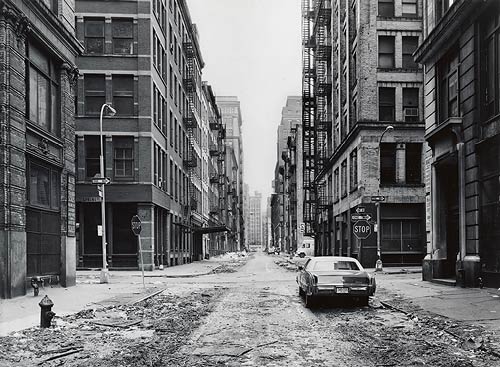
The themes in your work could be like a socio-political analysis, because they reflect our current reality; family, technological and social structures...
I love to make pictures. I have to have a reason to make a picture. It's more fun to give myself a challenge in making a picture than to make pictures of the most obvious things. But I have to find excuses. There are all these questions about responsibility and society and questions about existence and the different levels of influences that exist. Picture making has a lot to do with that, to find reasons to make my pictures. But in principle, I have a strong urge to speak through pictures and not through talking.
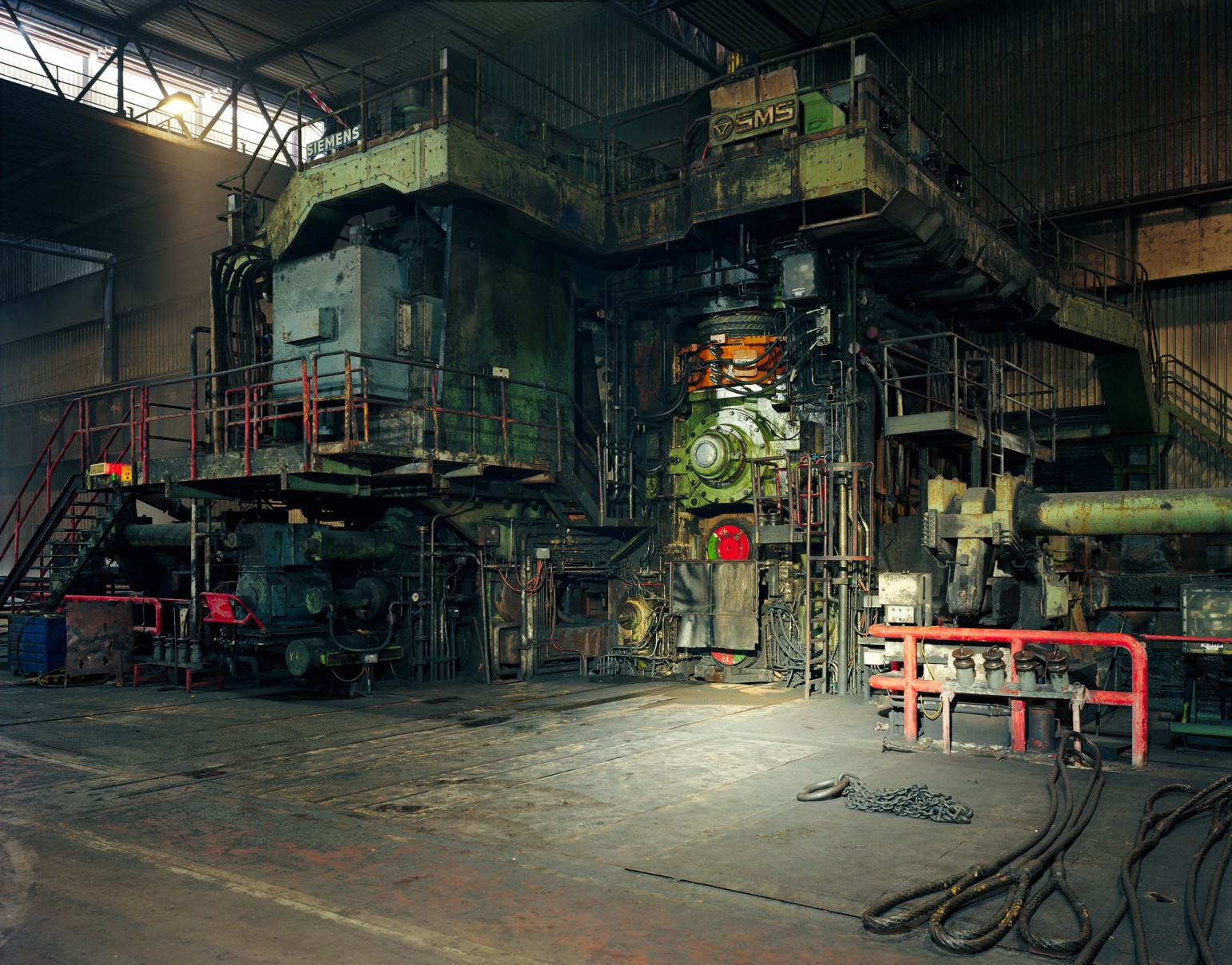
Yes, you know some people speak through music, or architecture or sculpture or pottery… It’s a strategy to form an identity with the work you're doing. On the other hand, it's a problem to over-identify yourself with what you do. I think I'm a very invested artist, but sometimes I feel that I don't identify completely with the art world.
I think the conscious absence of people is necessary to show that what you're looking at is a human creation. And so the mentality and everything that humans represent is expressed through the buildings. With too many people it would just be a normal street scene, with people in houses and you wouldn't get that feeling.
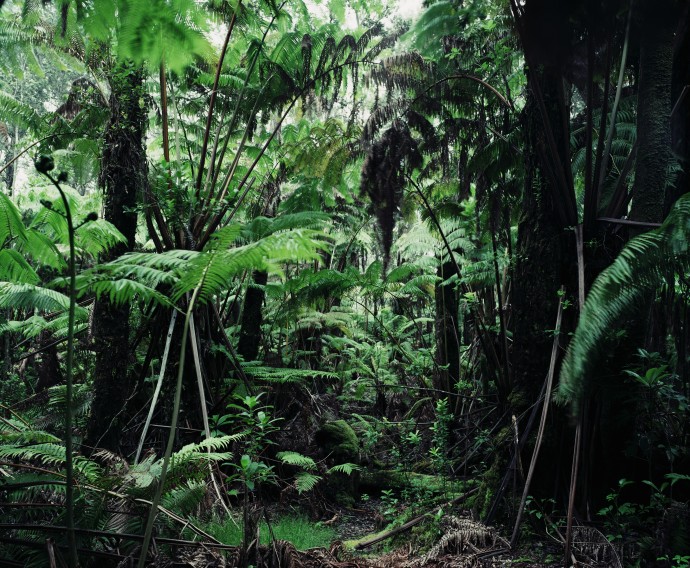
During our discussion of how inspiration arises, I remembered your Paradise photographs, some of which were taken in Australia. Were you searching for inspiration there or did it come naturally?
I used to have an apartment in Düsseldorf for a long time with a terrace towards the back garden. I often used to have breakfast there, read the paper and observe the visual structure of the trees and branches, the information flow of these patterns. That stimulated the idea to make these kinds of pictures that would be very crowded with information which would make you surrender to the act of observation rather than interpretation. However, it could not be a German forest with pine trees and their dominating verticality. It needed to be something wilder, so I thought that jungle, primeaval forests would be good. I had a few trips scheduled, to Australia because I was invited to the Sydney biennale in 1998. In the North East of Australia, there's a jungle area that used to be connected with Indonesia. These two continents separated, so there's this jungle area north of Daintree. It's quite amazingand I came back with five pictures.
In any case, these days we're so used to taking so many photographs digitally.
Yes but I use a much bigger camera , so it is very complicated and it takes a lot of effort.
What is your concept of paradise?
Paradise is a condition of mind, soul, emotional quality I would think. I decided on this title to make sure people don’t think the work describes botanical differences etc.
It has different elements. You are confronted with yourself to a stronger degree. The constantly moving growth around you is very elemental. Nothing stays the same at all times, everything moves very slowly. As a friend of mine said, as soon as you stand still for a while insects and other animals appear, believing that you're something they could eat. So you're easily confronted with your anxieties. In that respect, there are confrontational elements. But the pictures are pictures, so what I think the pictures do is make the observer very calm. Because you can see it’s a jungle, so you don’t have to identify an assembly of objects: a carpet, a chair, a table, a woman, child, etc.. We cannot stop naming what we see. But when you look at the jungle photograph you don’t have to. You can refrain from this impulse.
You were the first photographer to exhibit at the Prado Museum. Could you tell me how you feel about that experience?
In my museum work, I wanted to connect with the paintings I chose in a particular way, through photographing groups of visitors corresponding with the figures in the paintings I photographed. It was maybe like an attempt of resurrection, to give people a hint that these master works or so-called master artworks were not created as such when they were made. They were made by artists in particular circumstances of their daily life and these works were not born as the famous artworks that they are now. I wanted to make them look like more contemporary works. The interesting question is: why do works of art speak to us? Why do we even want to look at them? Because they were made with condensed information about love and desire and beauty and all kinds of complex emotional qualities? Because of their artistic craftsmanship? What resonates in us during the observation, which is a playful process, and one thing that destroys play is too much respect. When you have too much respect you cannot play, you are intimidated, you become passive. I felt that people would go to museums with too much respect. They don't really know what they’re allowed to think. Maybe in the end they only go to those museum galleries because they know the artists or the specific paintings are famous. The peak of the phenomenon is the Mona Lisa and the way it's presented now at the Louvre, which is quite a carricature. I think what happened was that the artworks in my photographs became a little bit more contemporary and the visitors were pushed back into history, because once I've photographed them, the moment has of course already passed. It created this double reflection of consciousness.
I thought to do that would be amazing, so I decided to fly to Madrid and meet Miguel Zugaza. Then at the time, I had a fever and was not very well and I thought it was a bad sign, but anyway I went to the meeting and I was coughing all the time but we liked each other immediately. And then he said "I want to support you to do that". And that’s how it began… When I was about to start, he talked about inviting me to help open the new building and I thought that would be quite amazing. I showed these three friezes - one of the Hermitage in St Petersburg, one of the Accademia in Florence and one of the Prado. And then I thought I would have to convince the board, so I hired a video projector and made a PowerPoint presentation in the construction site. Then they started to talk about offering to show some of my works amongst the paintings, which I found extremely strange and I was not so sure if I could handle that or if that would be a bit too much. Because I think photography and painting don't go together so well. Photography and sculpture go well together but photography and painting don't.
Well, I do use minimally invasive digital corrections, but I’m not inventing anything. The digital process allows me to deal with partial contrast and colour changes or adjustments in a much more finely tuned way than in the darkroom. The more recent pictures are mainly photographs taken with large format and sheet film, scanned into a file and then we work from the file.
Can you reveal anything about your new project in Israel for the Marian Goodman Gallery in London?
There will be some photographs that I made over the past five years in the context of this larger project called This Place. There are about 18 photographs in total but I will show maybe only 12 or so in London. Additionally, I will show new works I have made last year at the Jet Propulsion Laboratory in Pasadena and at the Armstrong Airforce Research Center near Edwards, north-east of Los Angeles.
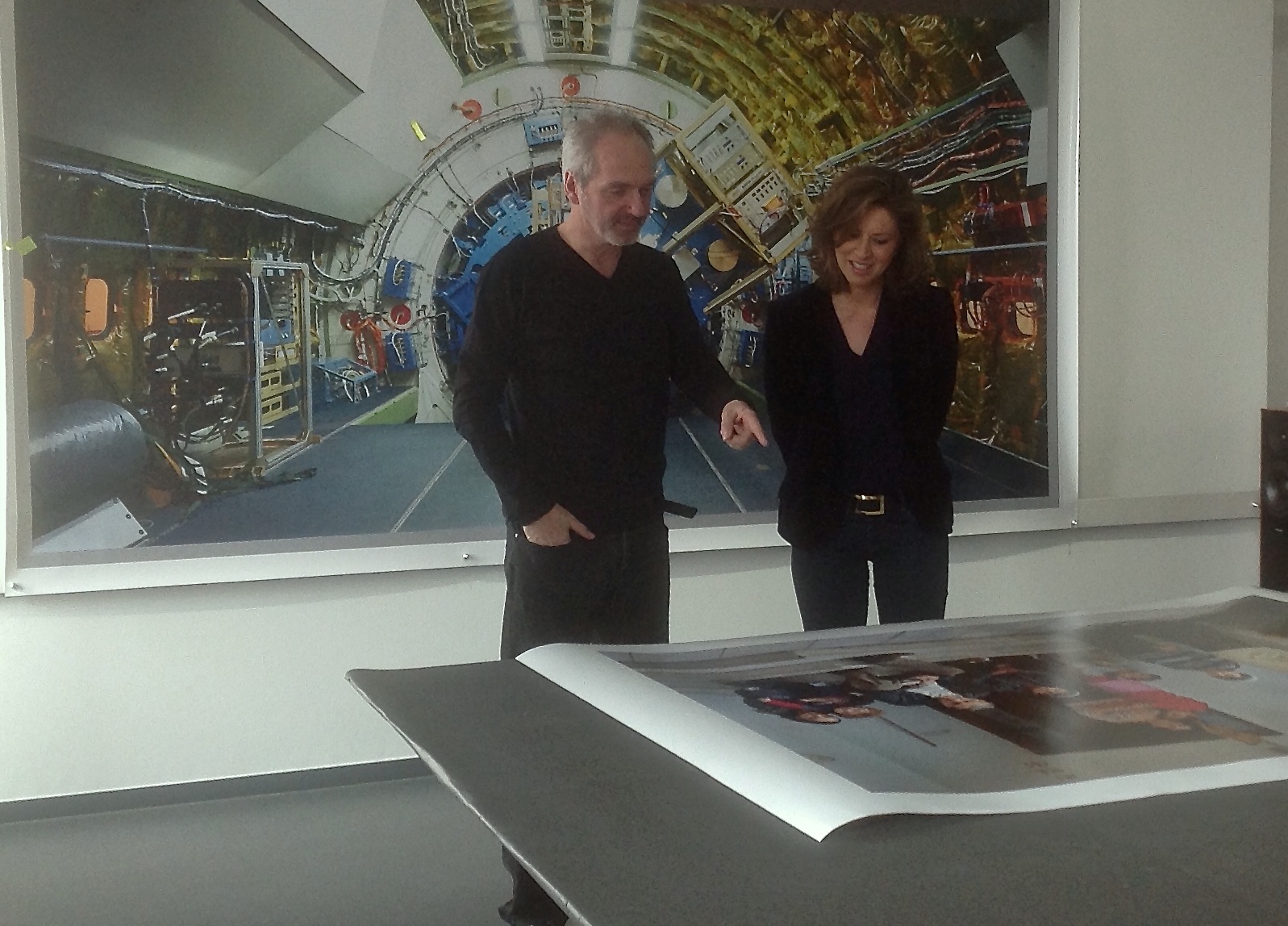
- Interview with Thomas Struth - - Home: Alejandra de Argos -
- Details
- Written by Elena Cué
Author: Elena Cué
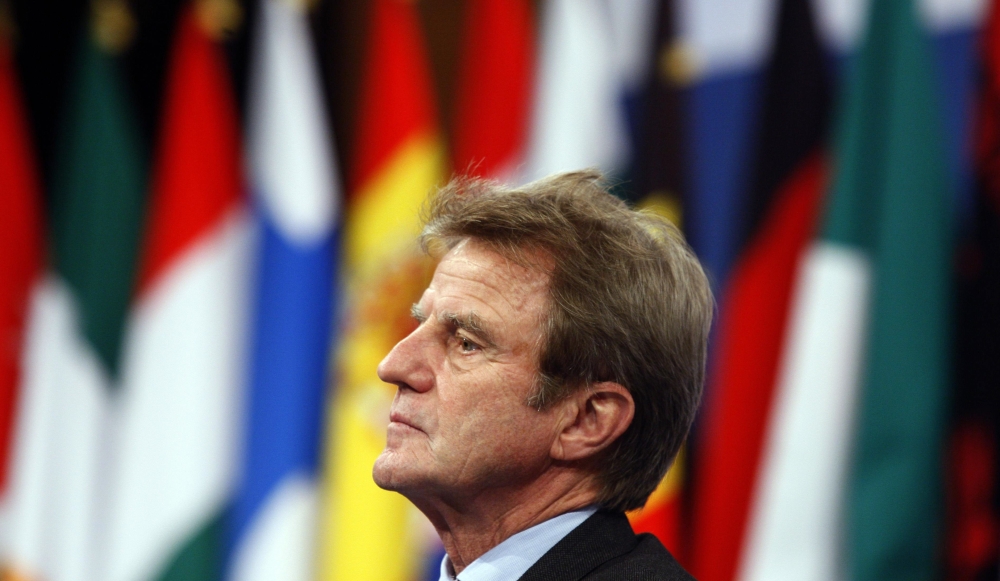
It is difficult for personalities with such prolific lives as the doctor and French politician Bernard Kouchner (Avignon-1939) not to provoke admiration and controversy. His political life, apart from the legendary May of '68, developed through his ministerial positions in the governements of Mitterrand and Sarkozy, demonstrating his independence. Moreover, he has been a UN Special Representative and Head of the United Nations Interim Administration Mission in Kosovo (1999-2001). He has also published numerous books, articles, and essays. But the most oustanding accomplishment is his humanitarian work started in 1968 when he traveled with the Red Cross to Biafra, Nigeria. This experience moved him very deeply, leading him to establish the non-governmental organization, Doctors Without Borders (1971), which made him worthy of winning the 1999 Nobel Peace Prize. In addition to this accomplishment, he was also the founder Doctors of the World (1980). Kouchner has been present since the beginning of many great natural and politial disaters in the world by assisting and alleviating the pain of the civilian victims of both wars and catastrophes.
E.C: We are flying over African territory, where everything started. What do you think the future holds for Africa?
B.K: Well, just a few words on the past of Africa: it has a past of battles and difficulties, but the group of people existed already and ISIS existed, although it was not as unethical… And when a colonisation came, all the colonisation, I mean the Portuguese, the Spanish, the French, the Indian, the British, they kept all the population in peace. And sometimes they cut families into parts. As ever, all the colonial lines were at the pressure of the battles, the armies, and after we used to say that we had to keep the countries like we were conquering them. I was not on a side but it was difficult. Sometimes it happened that we corrected the countries like it has been done between Ethiopia and Eritrea. Was it a good thing? I mean, trying to reproduce the borders of the people and the borders of colonisation? I don’t know, because Eritrea and Ethiopia are independent countries but they are fighting each other so I think that the old, wise decision to keep the border like it is - of course it’s an obstacle for the future, but it is like that, we cannot change completely now. So the future of Africa is certainly a big transformation, a big change, a big jump in the 21st century. First the population of Africa is important. We know that two billion will come in the coming century - before the end of the 21st century, so a very big potential for people. Will it be possible to educate them enough, because of the number of them? Yes, I hope it will be done by an international effort. This a huge continent, with space. For us - for Europe, we are all considering Africa like a free territory; like part of the future of humanity, that’s for sure. That’s why it was so important for the people of the bank - the bank of Dakar - to start in a country where democracy already existed. And Senegal is the best example of a democratic country in Africa. So it’s very important to start from a solid start, like in Senegal. Not all of the countries are looking like Senegal. We cannot answer to such a question, ‘yes, Africa is part of the future of humanity, it’s a continent in progress’ without a few words on terrorism and extreme Islamism. We have to fight against that, and today Nigeria is one of the most important countries in Africa. In Nigeria, business is developing, people are working very quickly. They have to take Boko Haram and the massacres of the women and the young people and the kidnapping, all this babarian attitude very seriously. And I hope it will be done by a sort of coalition of people. It will chat to Niger, etcetera. That’s very important also for the future. For their economical future and their political future. For the political with their particular forms, the future should be democratic. With an African style of course, an African conception of the word.
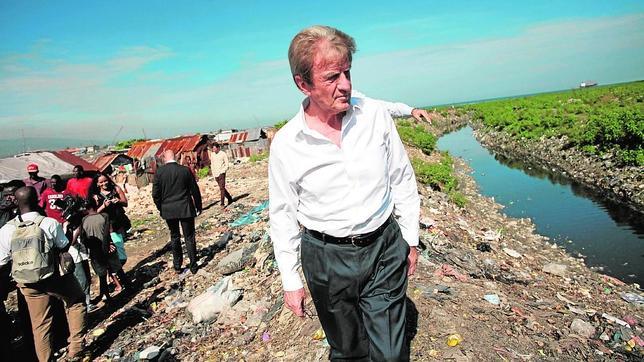
E.C: In 1979 you chartered a hospital ship, that was named Ile de Lumière, with a mandate of helping political refugees to run away from the communist regime of Vietnam in smalls boats. Do you think the Île de Lumière would be a utopia today given that thousands of Africans throw themselves to sea in search of a better future?
B.K: Yes. Formerly, we were talking about how, over the rest of the century, Africa is changing. But today, the most important question for them, and for us in a way, not the only one but an important question – is migration. What are we supposed to do, facing migration? First, we cannot stop the flood. It will take time, it will take years and years. Because the people there are not coming to us - to Europe for the pleasure of the country, they have to because of the poverty, the misery. They are fleeing out of misery. Out of misery, because there is no future – no immediate future – for their families. They have to feed their families. And in some countries like Mali, it is culturally necessary to leave and to go to France. And there are places where, if you’re arriving at the age of being an adult, you have to leave and find a job to send money back to your family. First point: they are not coming to please us, or to fight us. They are coming because misery is high, immense. Second, the TV representation for them, they believe that arriving in Europe they will find a job immediately and become rich, but this is not true. Because we are crossing a big crisis. And even in our country, unemployment is a big problem. So unemployment and migration, this is very difficult. We should nor confuse the « migrants « ,general speaking, and the asylum seekers. Those people leaving from a war, a dictatorship, those who cannot come back home without risking their life, being jailed or tortured should be accepted, along the terms of the Genova convention (1951). We are talking here about «economical migrants», not protected by Geneova Convention.
But first, we cannot mix even if it is impossible we cannot intellectually, in consideration of the people dying in the Mediterranean Sea. We cannot say ‘yes, but there are 11 migrants’, all migrants are fleeing for economical reasons and not political reasons. They are illegal, so we should rescue them. This is a moral obligation. This is very difficult to explain to the people and that’s why, as we are refusing massive migration, the people believe that we shouldn’t save the people. Some of them believe that we don’t have to send them a rescue belt or a rescue jacket. No, even if, after they come to Italy or to France or to Spain, we cannot just let them die. This is impossible for me. For me, even if we haven’t solved the problem of immigration in our country, we improve the number of people accessing our place. But two answers: first, we cannot say ‘we should think about a new general convention’ because the general convention obliges the countries to give asylum for political reasons if they cannot go back to their countries because of dictatorship, or because of racial attitudes. If it is too risky for them to go back, we have to give them asylum. This is the general convention, I think '54? And we are obliged, we signed the general convention. But the people, the migrants, the majority of them are coming because they are fleeing out of misery, as I told you. Not because of dictatorship, not all of them - Eritrea certainly. They are also fleeing for war reasons - the Syrian people, the Iraqi people. So it is very difficult just to separate now economical migration and political migration. First point: Europe exists. If Europe exists, this is not to let them die in the Mediterranean Sea. And I gave you the example already of the French boat: we sent seven of them to the China Sea – 12,000 km away, when the boat people were swimming to Vietnam. We were good to do so. The Mediterranean Sea is our sea: the sea of our culture, the sea of our holidays, the sea where we lie in the sun on a white beach. So we should rescue. Europe’s answer was very slow and it was an impossible, unfair and cold answer. We let them get on shore in Italy, the big majority. Of course, because Italy is the nearest country and the people are leaving from Libya and from that whole coast. Because of the commercialisation of slavery, all of these people, the migrants pay between one thousand dollars and seven to ten thousand dollars. All the efforts of their family during their whole life. And of course, these people, the merchants of slavery, they promise ‘you will find…’ etc. And they promise access to Great Britain across the channel, but no, it is impossible. So, the first answer should be coming from Europe – we have to share the burden, not to let them stay in Italy by thousands and thousands and ten thousands. No, we have to share the burden and we need to answer the proposal coming from the new commission - The Russell Commission. And this is absolutely no-one. The twenty-eight countries have to change. And the proper numbers – I remember from my country it was around seven thousand people. It is not so large! We are sixty-seven million now. So we have to share, all the twenty-eight countries. But they didn’t answer yes! They failed to listen. First answer: sharing in twenty-eight countries according to the number of people - the demographic, and second, the richness. So they did the calculation and then Jean-Claude Juncker proposed: first we have to rescue them. And not only the Italian boat and saying thank you to the Italian people and thank you to some of the Spanish people when they were coming from Libya and from Morocco etc. We cannot let them die. So let’s send one boat per country. Twenty-eight boats, this is nothing for the country. And if the country has no access to the seas they have to rent a boat! This is nothing. The second answer is sharing the burden, not letting the Italians accept all the numbers. And after, according to the Schengen Law, to cross the border and to be joining, say, Sweden, etc. That’s my answer. We should see this complicity of murder, not helping them in the sea, second, immigration is a problem. Do we have to change with a new answer of the general convention? I think so, it will be very difficult, but we should do it.
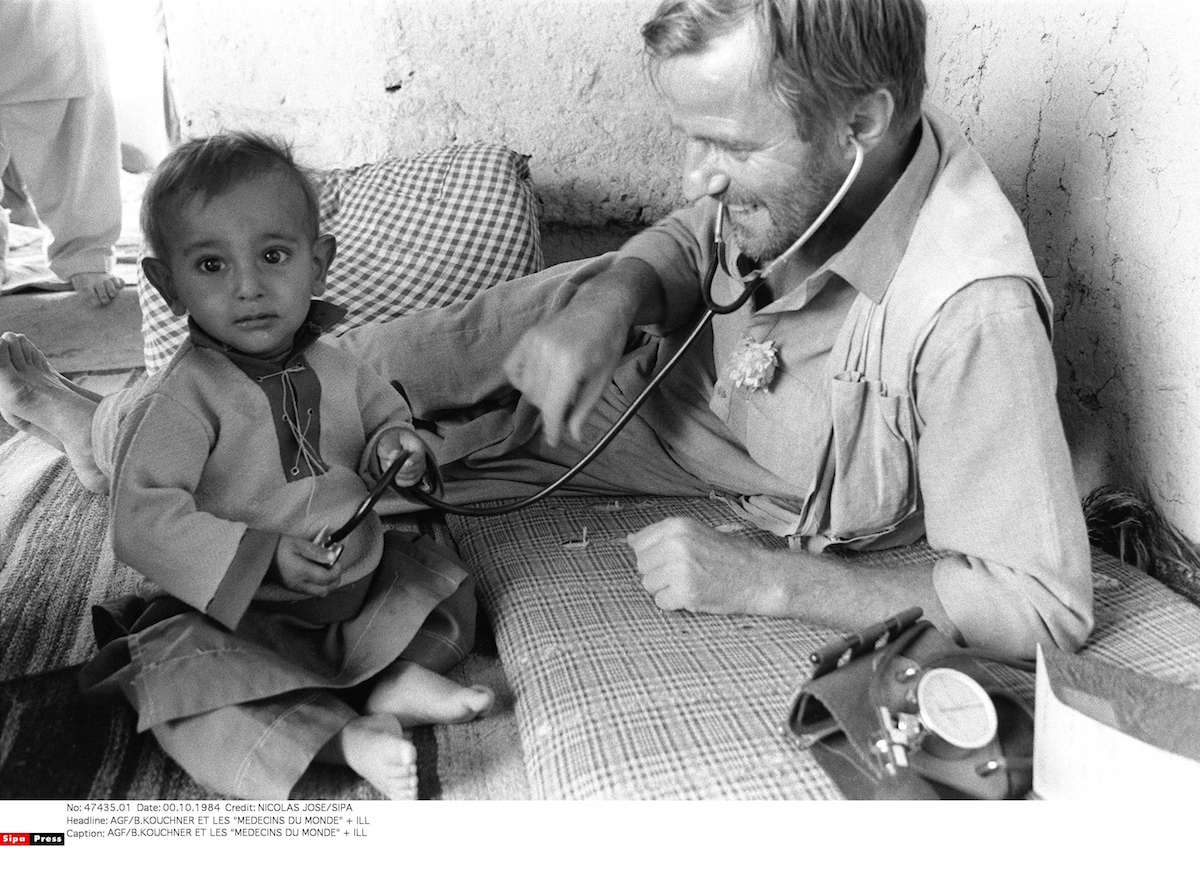
E.C: You named ISIS. What do you think is the future of ISIS?
B.K: To make a long story short, I think that we will get a new state somewhere between Syrian territory and Iraqi territory, because they already suppress the colonies at the borders. It’s up to the local population to fight against them, like the Kurds did. And I’m very confident with the Kurdish way of fighting against Daish. But we, and this is a must, should help the Kurdish people to fight against Daish. We tried - the Americans more than us - but we tried. We were involved in Iraq, we were involved everywhere, but it was not a big success. The poor Americans, they lost all the wars! Vietnam, Afghanistan and, of course, Iraq. So this is not a solution for us - to send ground troops - certainly not. Not ground troops, at the moment.
But if there were a real invasion, the answer of bombing the country like the Saudis did in Yemen, was another failure. They were killing the population more than the soldiers. We have to consider the internal battle between Shiite and Sunni people. Daish is now, unfortunately for the victims, killing Muslim people. Even if the danger is a world danger, they are killing Muslim people, so the Muslims they should react - with our help. But their future? I don’t know. I think there is no future for people as brutal as they are. I was very impressed when I went to Syria a few months ago to see a Kurdish woman fighting as a commander-in-chief in the city of Kobane. She was the commander of a thousand men and women, and they resisted to Daish, and they won! With a bit of help from the French people, and much more massively from the American people. We’ll see, I think that Bashar from Syria will not resist any more, I think that he will be replaced by another. The problem is Iran also fighting against Daish. Iran is a Shiite country fighting against ISIS - Sunni people, and this is a vicious circle. But we are exactly the way we were with the fighting and aggression against the protesters. This is a repetition. Don’t believe that religion is made for peace, religion is also made for war. I’ve no precise answer, but I believe that ISIS will lose. But immediately they will gain a big territory.
E.C: In 1971 , from "Doctors without Borders" you became a strong advocate of the concept of humanitarian intervention in order to protect civilian population from a sovereign state in countries which were unprotected and faced civil war, famine or genocide. Do you think this has been effective? What areas do you think could be improved?
B.K: Sometimes it has been effective. Like in Kosovo and Bosnia. Sometimes it has been negative, like in Iraq. We convince the UN system to vote in favour of the French resolution on the right to intervene. Because the right to intervene, according to my experience, was necessary to prevent war. But we never succeeded in preventing, except in Macedonia. In Macedonia in the middle of the Balkan war, we sent just a few hundred, and mainly Americans. We stopped the fighting, it was mainly by prevention. But for the rest, it’s always too late when we intervene, it’s always after the massacre. So I think that with the future of the right to interfere in protecting the people against massacre, unfortunately we were always waiting for the massacres and then we reacted. It was not always successful, not at all. Is Libya a good intervention? To protect Benghazi, the second city of Libya, against Gaddafi’s violent bombing by tanks, the right to protect the population is not binding and living at all. We had to have an agreement with the borders, and to stay and aid the people, with the agreement of the UN system. The right to interfere should go through the Security Council. Without a world agreement, any agreement is always coming from the only respectful international body, which is the UN. So I think there is a future for that if we are able to tell the people there is a risk of massacre somewhere, let’s try to stop the fire first. This is very, very difficult. Otherwise, we will be witnesses of massacres everywhere. Was it possible to protect the people in Iraq? Yes, it was the first success to get Saddam Hussein out. But after that, Shiite were the majority in Iraq, so Maliki was chosen after Allawi, who was elected as a secular guy. Maliki used the Shiism to get revenge on the Sunnis, so another time where it was not a good example. Is there a good dictator? This is a false question. Because of course it appeared, for the people, to calm down the situation, but it will not work for eternity. But was it better? My answer is no, but the answer of some is, ‘look, people were much more happy with the dictatorship’. The eternal question: For a doctor, and don’t forget that we were medical doctors. Medical doctors cannot accept massacres, just cannot. But that’s why, for me, the humanitarian conception is always a bit political. Protecting the people is political and of course, the humanitarian access is difficult. My answer is: Yes we have to protect, yes we have to act by prevention and, yes we have to act by information and education.
E.C: Did you achive more for human rights using your political platform or through your humanitarian work?
B.K: I think that it’s very complex to balance any inference of so-called political things. Human rights are political, and it will take years and years to explain to the people that the solution to the massacres is not hanging people or firing guns. There is no future for ISIS. Meanwhile there’s a sort of inside terror, and if you’re accepting terror, can you survive? At the beginning, yes, but after time you cannot. There is also no future for that. I’m in favour of human rights; I’m in favour of having respect for human life. I agree that religion as a peace process can work, but religion as a fight against the other religion, no. So we invented the right to intervene as a sort of medical dommage, but also as a political dommage. Medical passports were necessary to access the people at risk, to access the victims. Was it enough? No. But without a political vision it was impossible to force the door. Medical sensibility was affected by human rights; medical access was additional. Was it a political angle? Yes. Was it clearly political? No! This is impossible. Is it political dommage to save the people in the sea? No! This is a human dommage. And the right to interfere was a human intervention, for human victims. It’s not perfect, but it’s better than before, like some Jan Volski from the Polish government before the Second World War. He came to Churchill, Roosevelt having gone into an extermination camp and told them: ‘they are killing systematically’. But they did not intervene, they did not even bomb the railway going to Auschwitz. Why? Tell me why? For the same reason that we didn’t intervene for two years in the Mediterranean Sea. I don’t want to compare this directly to the migrants, but we still did not intervene. So, this is always a political decision. But the political decision is helped by sensible human reasons, by respect for human life. Who is respecting more human lives than a medical doctor? So it is an attitude.
E.C: You could be described as similar to the Dr. Schweitzer, the Doctor who attended to the sick in Africa and received the Nobel Peace Price in 1952. His motivations were to give back everything he received whilst he could. Is this your case? What are your motivations? Or perhaps you would describe yourself as “life-affirming" and a person who spreads vital values.
B.K: Well, I was writing a book on Schweitzer, he is a very interesting guy - the pioneer of this human access. Not for the same reasons that we had, he was a religious man. He was a protestant and a medical doctor. I’d say yes, he was one of our examples, and a good example. Of course at the same time it was before the discovery of antibiotics, and a lot people were angry because he didn’t use modern medicine. But at the same time it was good, he used the cultural methods of the people in Gabon. Of course, I visited his office in Lambaréné and sat at his table and I had a lot of admiration. My book on him is not finished, but Schweitzer gave us a good example for the time, and the time was a colonial time.
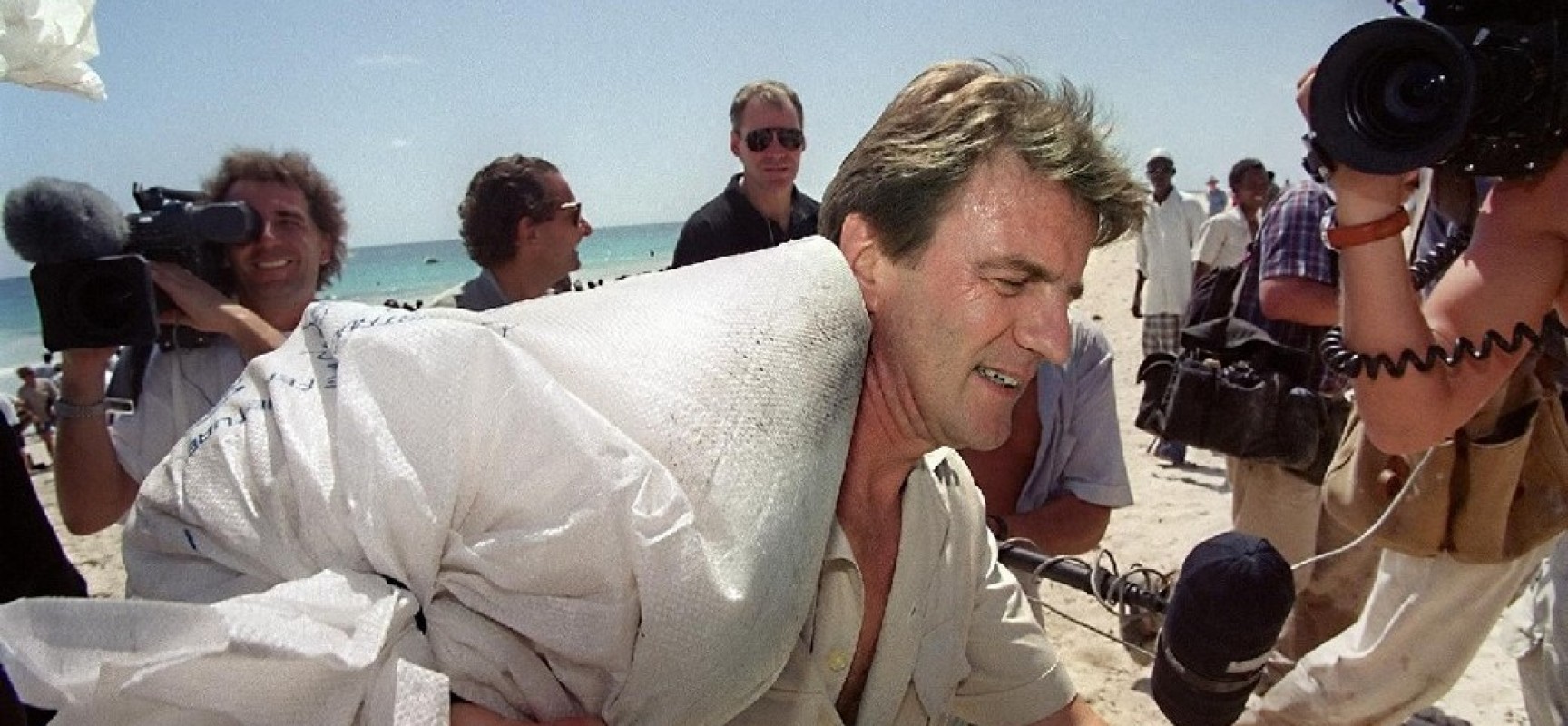
E.C: But what about your motivations?
B.K: My motivations are of course similar, but it was after the Second World War and after the Holocaust. And as I told you, nobody reacted against the Holocaust. When I was in Biafra, during the Nigerian-Biafran War, I saw the people coming to our hospital by the hundreds and hundreds. The bombing was targeting the civilian population. There was a blockade, so starvation was killing the babies in the thousands. So we were doctors, we had to react and protest, which we did and created Doctors Without Borders - just a few of us. I have to name my co-founder who was Max Recamier, he was not a political guy at all. He was a man of faith, he was a Catholic. But he was a doctor, so we did it together. It was more or less the same motivation but for me, it was more that my grandparents died in Auschwitz. And nobody protested. It was another time, but Schweitzer was a good example, not the perfect example – because there is no perfect example.
E.C: Do you think there is a solution to the Israeli conflict?
B.K: Yes, the solution is the creation of a Palestinian state. It is easy! But will it be possible? I cannot simply summarise, I don’t know if it’s completely too late. But the security of the Israeli is the security of the Palestinian. The Palestinian state would protect Israel; Israel would protect the Palestinian state. This is so obvious that it is ridiculous to find another solution. There is no other solution. Yes, for the time being the Israeli army is stronger than the other. But it will not last forever. So the solution is in between. I don’t say that the solution for Iraq or Iran is easy to say. But the creation of a Palestinian state is the beginning of all the solutions. We are in a real hurry. Unfortunately, for me, the Israeli people voted for Netanyahu. But my friends Tzipi Livni and Isaac Herzog - the chiefs of the Israeli Labor Party, were in favour of the Palestinian state, and they were right. So, on the other side, Mahmoud Abbas is an old man now. The new generation really want a Palestinian state, they are recognising Israeli people. Not only that, but they are meeting with them every day. This is ridiculous – it is a big, big crime not to recognize a Palestinian state. I know the story of Israel, yes they have the right to live, the right to be protected. This is my solution, that’s all. At the same time it is very difficult to understand the American political attitude to this. But President Obama wants to sign a document with Iran. I cannot be against peace; it is better than war. Let us see. For Israel it is a danger if Iran is following the line of setting up a nuclear weapon. I think to sign - if it is signed - at the end of the month, or at the beginning of July, I think that will be progress. Gaza was unacceptable, it did not change anything for some thousands of days of alienation. I know Hamas is not for peace, but I know that PLO is for peace. Let’s side with PLO!
E.C: What did you think about the position of Netanyahu?
B.K: Netanyahu was against the peace. Netanyahu is in favour of enlarging the borders in favour of settlement. We were close to the agreement with the former government, very close. I’m strongly in favour of the existence of the Israeli state, strongly in favour. But the basis of the Palestinian state is showing that they are not the country undermining Israel, not at all.
E.C: You’ve just arrived from Ukraine. What were you doing there?
B.K: I don’t know if I will do it, but I was in charge of offering a plan for changing the health system completely in Ukraine, like it was in Soviet Union and in Russia - a statist plan. I think we should mix public and private involvement under certain laws and under private health insurance, under public supervision. We’ll see, but there is a problem with Mr. Putin, who was not responsible for the separation between Russia and Ukraine, that was Gorbachev and Yeltsin. So we have to respect the border, and even if Russia is a bit different, the way they took over in fighting and bombing, remember, not only were they fighting but they missiled a Malaysian plane with Dutch people on board. It is not acceptable. I don’t know, we have a problem, and the solution is not war against Russia, certainly not. So is it sanctioning - economical sanctions? Partly, yes. And talk and talk, as we used to say, diplomacy.
E.C: What are your future proyects? Maybe a book? About...
B.K: I want to take some time to think about – and this is very arrogant of me to say so - my experience in mixing the political and the humanitarian. Having confidence in people but at the same time discovering that people love war. It’s like the most exciting experience for them, like a permanent merging and mixing male hormone through history, and though it’s a kind of caricature what I’m telling you, maybe it’s true. But I strongly think that you cannot separate humanitarian intervention from politics. I want the political people to be a more humanitarian, and I want the humanitarian to be more political. But they want to separate, you know why? Because of power! Having big NGOs gives you power. We are not all like Bill Gates, he’s a good example. I don’t want to insist too much, but remember what I said in your first question about developing Africa. Developing, developing; investing, investing. That’s the answer instead of letting them die in the sea, absolutely. We take tiny steps to start, we are starting with humanitarian, but humanitarian is not the solution of development, it’s a sort of generosity and charity. Okay, this is better than letting them die, but this is not the solution, the solution is development. So that’s why I was happy to be in Dakar for the setting up of the Dakar Bank, the people were waiting for that. It was a good signal in the modernization of Africa. So, we’ll see, because the solution is not to be a doctor instead of them or inventing the drugs in order to sell at high prices.
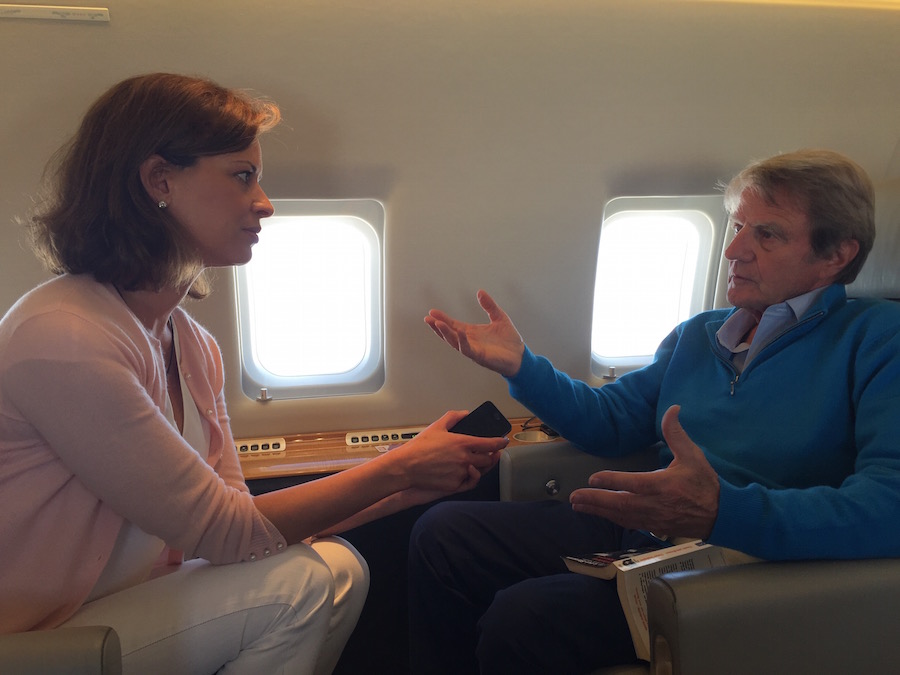
E.C: Could you tell me more about how Doctors Without Borders originated?
B.K: We were coming, young European doctors. French doctors. That’s why we went, we were French doctors and we were coming from a rich country; a country where we had been highly educated and we were had diplomas and we were working in hospitals, good hospitals, in France. And we discovered what? The reality of the world. And we discovered that our education was unable then to tell us what we have to do…what we had to do. What was our behaviour? We discovered that there were people dying of starvation, they were dying of misery. Of course they were also dying from bombs. We discovered a word: bomb. They were bombing the villagers, they were machine gunning all the highways, and they targeted the children. Every day there were violations of human rights, of course it was a civil war. So what were we supposed to do? To take care of the victims. OK, we took care of the victims from the bombing. It was not easy. A lot were dying, the others we tried to save. We played the role of doctors. Women and children, dying from bombing, okay, we helped. But after, we discovered that they were coming because of starvation, the children. We didn’t know about ‘Kwachmaco’ and ‘Marasmas’. The name of these illnesses were unknown to us real doctors. So the first time we set up a resuscitation unit for the children, so we tried to resuscitate them. Sometimes we succeeded. But then we had another hospital and then were was a flood of starvation they went back, resuscitated, to their villages. Then three months after, they came back another time with a different condition and the third time they all died. So what were we supposed to do? To say, ‘well, you know, we’re doctors and they came – doctors are waiting for the patients. First step: we went to the patients, across the border - across-the-border-doctors, doctors without borders. Then we protested politically. It was a big revolution because the doctors used to keep quiet. No, now it was not possible, the Hippocratic Oath is something between the patient and the doctor. Yes, you have to maintain ‘the secret’, but not during the massacres and it reminded me that during the Holocaust nobody protested. So we had to protest because the children – African black children were condemned because of the food blockade on both sides. There was a part of Nigeria completely at siege - that was our discovery. That’s why, coming back from Africa, we set up in ’71 because we were in ’68 and we had to regroup the people etc. We were obliged as doctors to play our role to exercise our duty. Our work. To be able to be a real doctor, we had, politically, to protest. Because there is always a way. They were dying from starvation, not because of natural disaster, because of a blockade by demand.
- Interview with Bernard Kouchner flying over Africa - - Home: Alejandra de Argos -
- Details
- Written by Elena Cué
Author: Elena Cué
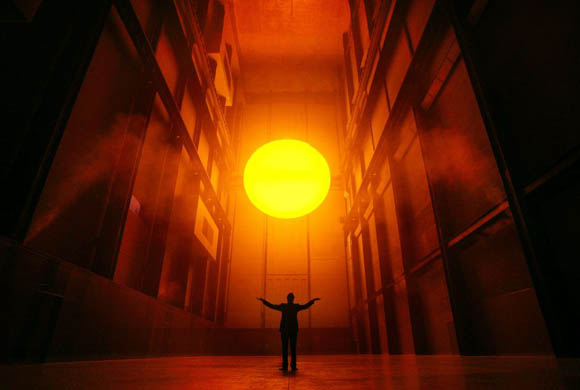
Olafur Eliasson (Copenhagen, 1967), who this year was on the verge of winning the Princess of Asturias Award for arts in a tight battle with the winner, the cinema producer Francis Ford Coppola, is one of the most outstanding of the multidisciplinary and experimental artists of present times. He has exhibited at the best contemporary art museums of the world, such as the Tate Modern in London (2003) the Museo Nacional Centro de Arte Reina Sofía in Madrid (2003) and the Modern Museum of Art (MoMa) of New York (2008).
Olafur Eliasson, a visual artist known for his experimental installations, sculpture, photography and cinema, is a creator who finds inspiration in certain motifs and ideas of the recent German philosophy, ideas he tries to put into practice in his work. Following this inspiration, his purpose is therefore not limited to creating works of art and experimenting along the already consolidated habitual modes. He wants much more. He aspires to educate the spectator to open to new forms of perception and understanding of the world through his participation and inclusion in the work of art. He stimulates his perceptions and sensations to see reality from other prisms and to have new experience and knowledge of his own subjectiveness.
A work of art is only complete when there is interaction between it and the spectator, when the spectator brings in their experience and interpretation to also become the creator of the work. This reception aesthetic is therefore already far removed from the concept of work of art as ”work in itself,” in other words in that in which there would only be a place for a single concept and a single suitable interpretation, that of the meaning given by the author. Eliasson’s work, on the other hand, is fed by the plurality of meanings given by the spectator.
What Eliasson suggests is a transformation of the way we observe reality, a becoming aware of our prejudices and conditioners to open to another way of relating to it. If we do not dismantle our world as we perceive it and understand through our interaction with it through our space-time configuration, by projecting our concepts, emotions and sensations on it, we will never be able to open to experiencing other worlds.
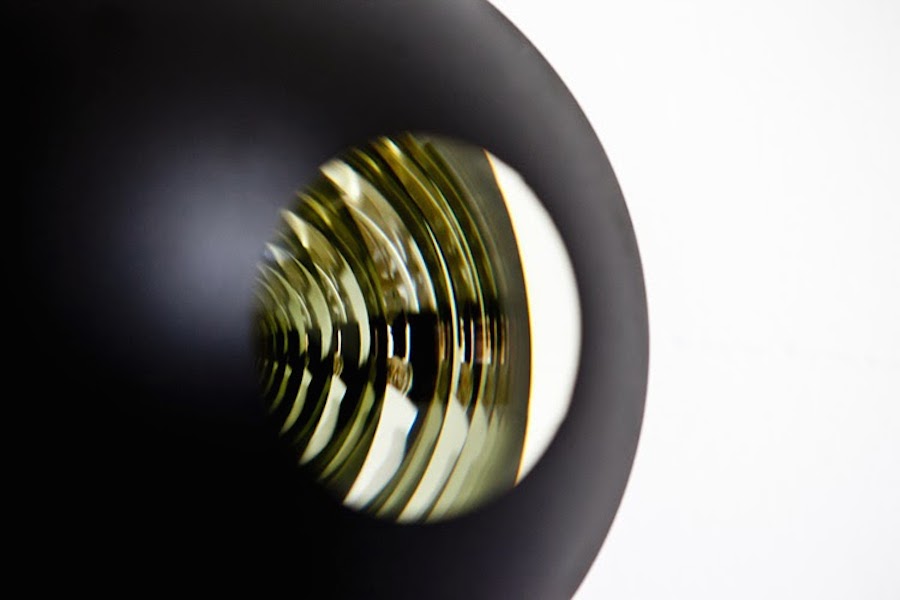
One example of it would be his splendid The Weather Project (2013): an immense nightfall is reproduced in the Turbine Hall of the Tate Modern in London, and which is designed so that visitors might experience not only the importance of the weather in our survival since time immemorial and in the formation of our social structures, but also the relationship between existential time and our limitations as finite subjects.
Here artist and work blend at the time when the observer interacts with the work and enters it to create a common “now” between artist and spectator. Experiencing the “now” for visitors is therefore the result or remembering the past (the artist’s conception, their own past experiences) and of anticipating the future (the meanings and projections suggested to them), thus becoming the “now” on the crossroads of both time dimensions.
In 1995, this artist created the Olafur Eliasson Studio in Berlin, in which around 90 people between architects, engineers, graphic designers and historians of art experiment, investigate and produce works developed with elements such as light, water, colour, space... However, the fundamental figure of this creative group in recent years was the recently deceased engineer and mathematician Einar Thorsteinn. Olafur attempts to synthesise art and science as the great artists of the Renaissance did.
The characteristic thing about this artist is therefore that he understands the world from the Kantian perspective of the configuration of reality by the subject who projects his subjective setups to give a cultural meaning to the world. Therefore, with his art he tries to nurture another kind of view of the world with new perceptions and sensations.
Sometimes, through his visual games, an experience can be produced of pure sensations, in other words, one that is not reflexive and manages to bring spectators out of themselves to be measured in the work, or which can cause the active participation of the subject in it. Then the importance is seen of the spectator who interacts with the work with their multiple interpretations.
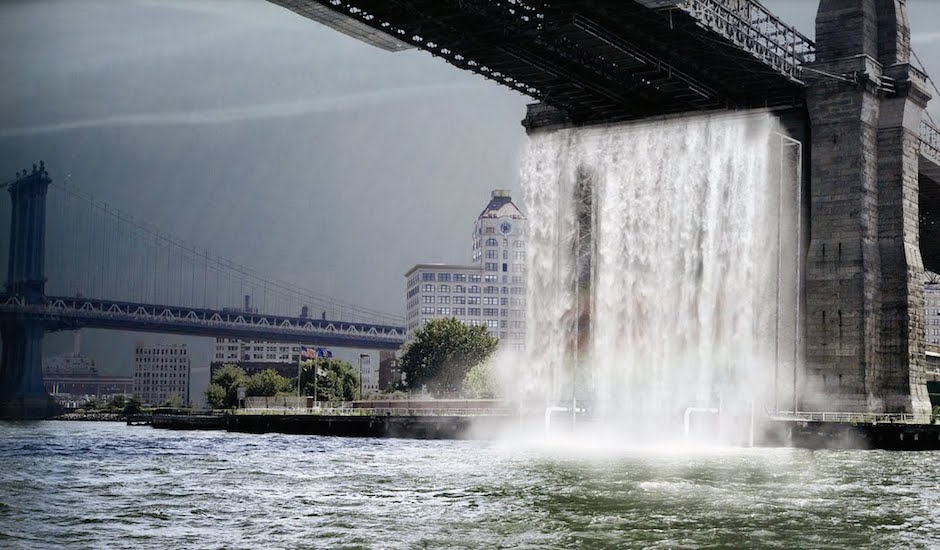
The installation of four waterfalls on the East River in Manhattan (New York Waterfalls) or using ephemeral green ecological pigments to dye the waters of Stockholm, Tokyo, Los Angeles or Norway, amongst others (Green river), reveals the will to exercise our senses towards other possibilities of perceiving and experiencing this other reality configured by the effects of our cultural intervention on it.
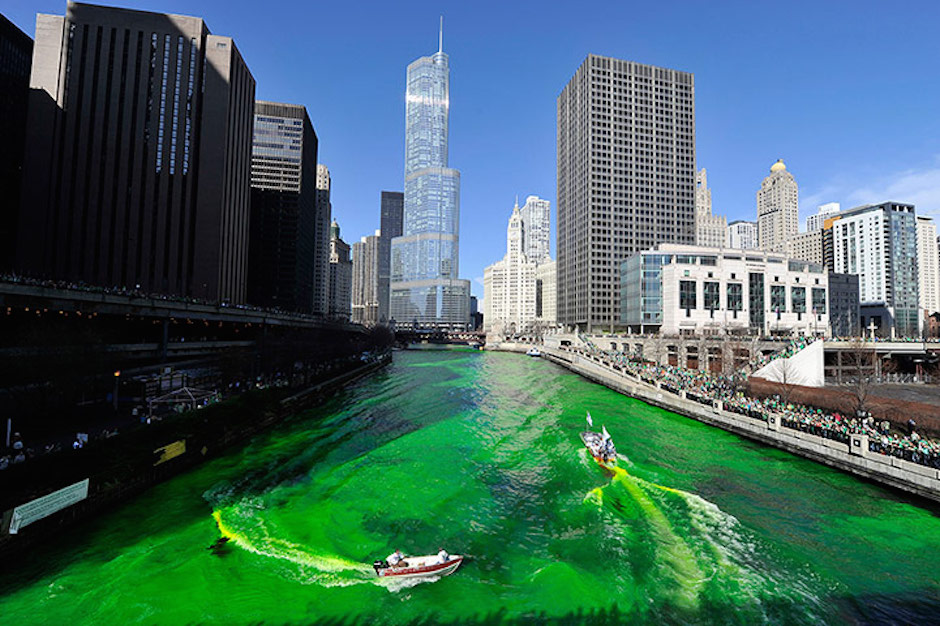
This artist’s proposal is to go beyond the traditional role of art in our culture, when we relate to it according to the subject-object setup. His aim is to enter an experience of the creation of culture through art, which is not just the work of a creator, an artist in this case, but also that of the receivers of these works that are not complete if they do not project meanings on the works to complete them with their interpretations. In this sense, the spectator forms part of the work, is inside it like these boats on the river’s green waters and the visitors entering the artistic dusk of The Weather Project.
- Olafur Eliasson - - Home: Alejandra de Argos -
- Details
- Written by Dr. Diego Sánchez Meca
|
Contributor: Dr. Diego Sánchez Meca, |
 |
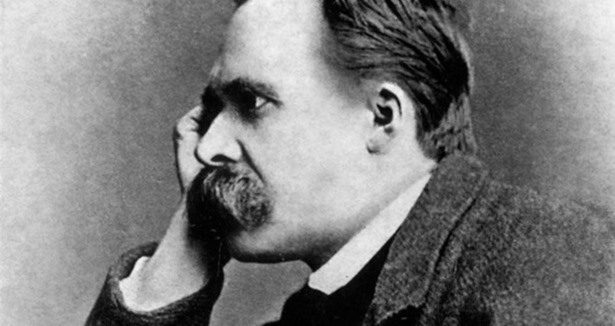
She got out of her car, knees together, showing off her elegant high-heel shoes, her skirt cut and her printed silk blouse with a cleavage that left the smooth skin of her neck in full view. This image of Isabelle merged with the other images that were still in my memory, jumping around and crashing into one another over and over again, obstructing the truth and pulling me towards that world of memories previously alive, idealized or simply made up. It was getting dark outside and I was about to reach Sils Maria, in the Swiss High Engadin, to take part in a congress on Nietzschean philosophy, together with a high-level international group of experts.
Her weightless, ethereal hair in the wind and her big blue eyes were the hallmarks of this free and modern woman, someone who moves with independence and who knows how to get the most out of life. At the same time, though, she enjoyed an elevated philosophical and intellectual reputation which inspired admiration in students and teachers alike. It’s impossible to reach the levels of understanding of the difficult topics she has written about without some kind of rigorous asceticism, and her academic career was a testament to her courage and self-discipline. Nonetheless, and in contrast to this, she was also well-known for her desire for fun, for her girl-about-town attitude, and for her ability to mix smoothly with the shadows of the night where, together with all the luxury and glamour, one also finds touches of the banal, the frivolous and, yes, the obscure.
Although this wasn’t the first time she was visiting this incredible location in the Swiss Alps, the landscape of the valley and the sublime mountains made an impression on her once again, to the point where she was naming the peaks to me one by one. On the Northern side, Lagrev and Gravasalna, and to the South, Rosatsch, Corvatsch and Chapütschin. And then of course the lakes: the Campfer, Silvaplana and the Sils, its waters shifting between sapphire blue and turquoise. The colours varied between the light green of the meadows at the base, to the darker green of the great woody masses on the sides of the valley, to the grey of the peaks and the white at the very top, the colours morphing from one to another with magical fluidity: within an hour they would go from the joy of the sunny brightness to the severity of the greyish fog and mist. Among that deep silence, one had the impression of witnessing the birth of the world, since neither the grass nor the earth nor the water seemed to have grown old at all.
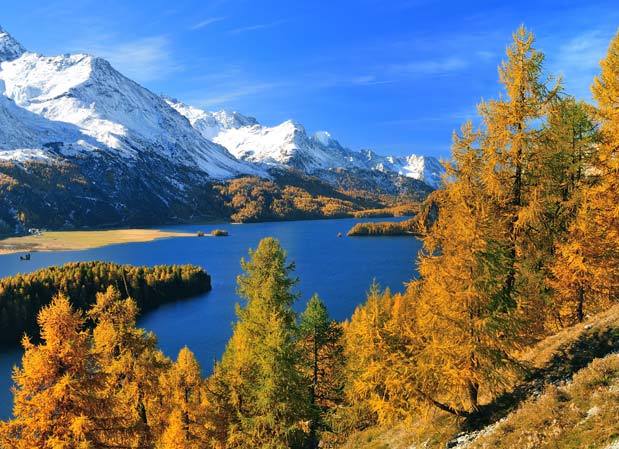
Isabelle remembered that during the summers that Nietzsche spent there, between 1881 and 1888, he lived in a rustic lodging that was part of a small group of houses on the valley-side, with balconies full of flowers. After some time, the original village had become a place of luxury for affluent holiday-makers. “Nietzsche”, she would tell me, “would come here to think and to write. He would work in the mornings, take a stroll during the day, and return in the evening with his notebooks full of notes, only to resume working after dinner until well into the night. According to his journals, the strolls he most enjoyed among the many that he took (through the woods, along the shores of the lakes, in the mountains, etc.) were the ones that took him up towards the lookout point, from where one can contemplate the solitary Surlej, lying among the meadows; or even when he went up until he reached the throat of the Fex from where, to the right of Platta, it is possible to view the entire amphitheatre of peaks. How about we go on these strolls ourselves today?”
The congress’ first talk was given by a veteran Italian professor who read out the content of a letter by Nietzsche to his friend Peter Gast from August 1881, in which he wrote, “Here in Sils Maria the most unexpected thoughts strike me. My dear friend! Sometimes I get this strange feeling that I’m one of these machines that explodes. The depth of my emotions makes me shiver and laugh. Sometimes I can’t leave my bedroom simply because my eyes are all red. Why are they so red? Because the previous day, while I was strolling, I had cried too much, not with sadness but with joy. I was singing, I was talking nonsense, I felt full of life again, a feeling I now treasure in myself as others seem to lack it”. It was obvious, the speaker was adding, that Nietzsche needed solitude. He would arrive here full of work projects, only to find his trunks full of books sent to him by his loyal friend Overbeck from Basilea. Here he read Spinoza,and was surprised by the proximity he felt towards him; he dabbled in mechanics, political economy, cosmology, biology and psychology. A great transformation was growing inside of him, and for it to bear fruits he vitally needed solitude. He was fond of saying that he came here to “disappear forever” (der auf ewig Abhandengekommene). But the most important reason was, in fact, that in Sils Maria he could take long strolls and seek out inspiration, because to him — and so he mentions explicitly on more than occasion — his best ideas would come to him when he was climbing the mountain.
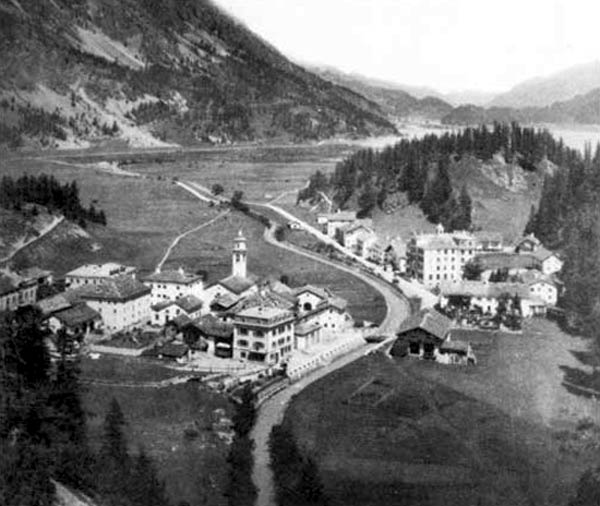
Another speaker referred to the inspiration that Nietzsche confessed to have had in Sils Maria that led to his more decisive thought, his most enigmatic and difficult. While taking a walk near the huge monolithic block of the Surlej, a vision came to him, making him shiver and write in his journal: “This was written at 6,000 feet above the rest of men, and in the present time.” What had he seen in this ecstasy, and what was this note hiding?”, the speaker was wondering. From what he told us later, in Ecce Homo, in this vision that had divinely exalted his soul, he thought that he had suddenly grasped the law of the worlds, their eternal return, in a kind of Heraclitean or Pythagorean reminiscence. A very old thought, suddenly uncovered from its oldest most forgotten recesses, just glimpsed in a kind of trance far beyond our daily experiences and the limits of our senses. Some have been quick to point out, “This is proof of the beginning of his madness”. Nonetheless, ended the professor, Nietzsche converted this intuition into a liberating thought with the power to transform us all into superhuman beings.
By the time it was Isabelle’s turn to speak, there was already much anticipation in the room. She began somewhat abruptly, raising her head rhythmically throughout her talk, and smiling indifferently at the end of each small pause: “Totalitarianism,” she began, “is the most successful figure of the solemnity of our faith in being… We could say that it is the exacerbation of the profoundly human tendency to compensate for the wants of being with an overdose of being. We don’t just see this in totalitarianism, however. The fullness of being is affirmed and reaffirmed in all official debates on politics, art, culture, religion, etc., also in our democratic societies. We need an idealized, idealist world, perhaps deified and adorned by a native happiness. And for this reason, those who have ironically insisted in the system’s discordant aspects have been expelled from the circle that is being closed with the same lively enthusiasm with which one attempts to exorcize the devil’s laughter. Nietzsche, lover of these avenues, inspired by these heights, suffered this exclusion, and is still being excluded to this day.”
She continued developing her argument, referring to an irrepressible fight between things and their meanings, between human beings and themselves, calling it the best definition of reality. “For this reason”, she concluded, “this fight is unleashed, and is always accompanied by the desire for lost, unrecoverable harmony, which is the desire that dominates in that construction of worlds in which the inessential takes on the appearance of the essential, and where a false harmony covers up a reality full of noise, dirt and cruelty. Only when it is transfigured in the beauty of an artistic illusion, wrapped in the dream of a myth and of Apollonian measure, can the absurd and terrible character of existence be contemplated, only then can it seduce one to live it.”
The auditorium, now more full of people than in previous talks, showed its satisfaction at the end of the conference with a resounding applause, and the other speakers made complimentary remarks and thought up various questions that Isabelle answered with brilliance and elegance.
“Take me away from here”, she whispered to me, approaching me when the next talk was about to begin. “I need a drink. It’s a matter of life and death”.
We went to a pub and she asked for a large gin and tonic with Citadelle. I complimented her on her success, although I noted that she wasn’t really enjoying it. She seemed indifferent, quickly changed the subject and began pondering the virtues of the botrytis cinerea, a bitter-tasting fungus used to sweeten Santernes wines. Then she added that what she really fancied for dinner were crépinettes scented with Piedmont truffle and ox carpaccio washed down with a good Burgundy or Moselle. And to end the evening tasting a good Krug Millésimé in an ice-cold glass while we gazed at the stars’ reflections on the surface of the lake. “Oh darling!, there’s no place like Paris to live life to the full, there’s no place like Paris to dream of a full life”.
The waiter returned and served her another round, this time pouring blue Bombay Sapphire in a wide glass full of crushed ice, while I stood there looking at her, intrigued by her mystery, an oracle of the occult that I attempted to decipher to sense what it was that she was hiding behind her face, behind her words.
“In love with Nietzsche, perhaps?”, I asked her.
“It’s difficult to be in love and be productive at the same time”, she answered. Her gaze returned towards an undetermined place, she became quiet and after a pause she added:
“To stand out professionally is difficult. The best thing to do to get attention is to say or do extravagant things.”
The only thing separating us was the glass with ice, which was slowly melting and sticking to the slice of lemon. With a sweet, serene gesture and a look from within, she continued: “The best lovers, if they really are in love, are in a rush to end their torment, and they do everything they can to liberate themselves from it. In order for the relationship to last, one should never swear to be in love. What love does not end up telling itself the little totalitarian story of its harmony, rebuilding a past in line with its aspirations, from which are excluded all doubts, all emptiness, all disappointments and infidelities? I think that, because of this, love — and not knowledge — is where human beings sign their most solemn pact with being. A pact which must be inseparable from parody, because there are no loves in which there is no adaptation to being, in which the misunderstood is not the most important person (the illusion of a full alignment with the other, right there with incommunication, tension and discordance), in which the only existing link is not that of jealousy of compassion, and in which the very idea of love is not continually betrayed by its figures. What I like about Nietzsche’s criticism is that it is still as hurtful and intolerable for many because it unmasks the mystifiers who manipulate and decorate this “reality” with fictions and absolute and totalitarian masks. These impostors don’t care about the truth that all authentic faiths always go hand in hand with doubt, and that the important things in life, like love, are never protected from the erosion of expiration, mistreated because of what we do to them.”
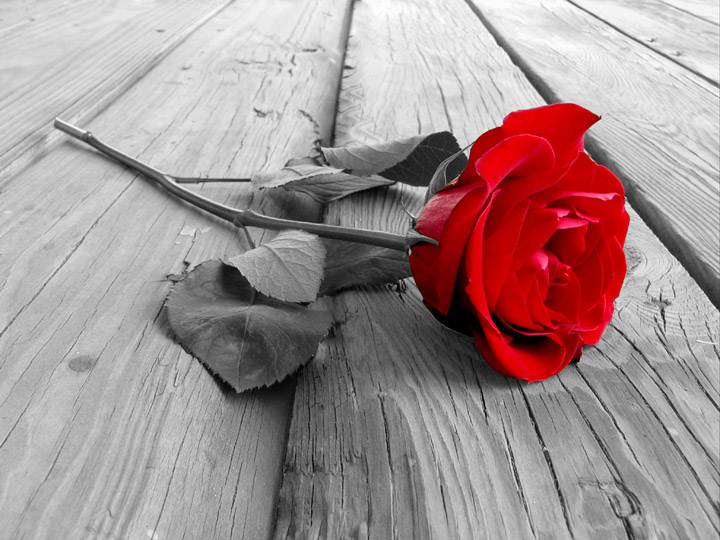
On Saturday, at the end of the congress, we spent a day out to Surlej. The birds flew across the sky at the start of the day while we began our trek up the mountainside. The daylight had a delicate, imperious quality to it, while the lake reflected in its stillness the blue of the sky, a few grey butts that crossed it and the vegetation of its shores. The beauty of the place gave the morning a sort of false euphoria that imposed itself on my imagination, as I remembered the words and conversations with Isabelle. “What beauty!”, she exclaimed, placing the back of her hand on her eyes to cover herself from the sun. Suddenly the sky began to darken and the day started turning into a strange night, bathed in a livid light that seemed to grow from the surface of the lake. An inverted light that was being projected back onto the black butts.
“What inexplicable means is this, do you think”, she said to me, “that converts white into black, the interesting into boring, the risible into essential or the fascinating into fearful? It escapes us. Meaning occupies, and encroaches on, the space of the absurd, the anxious confirmation of nothingness is soon alleviated by the firm weight of what is. This is our most common experience. But then, doubt and skepticism must always remain like the hidden face of our faith and of our original assent to meaning. Nothingness is not the absence of being, but its double interior, its inseparable opposite.”
Once we arrived at the top, the air mixed the fresh outpours of rain with the smells of the woods and the breath of the grass, its humidity quickly evaporating under the sun. From that height, the torsos of the mountains, as if rising up from nothingness, formed delicate, fantastic, imaginary scenes. Small pockets of vegetation floated on the blue mirror of a lake, slightly pushed by the wind, while the trajectory of my butts, reflected on the surface, created the illusion of a world which seems to be endlessly sliding by, but which, in reality, always stays the same, motionless.
- Details
- Written by Marina Valcárcel
|
Author: Marina Valcárcel
Art historian
|
 |
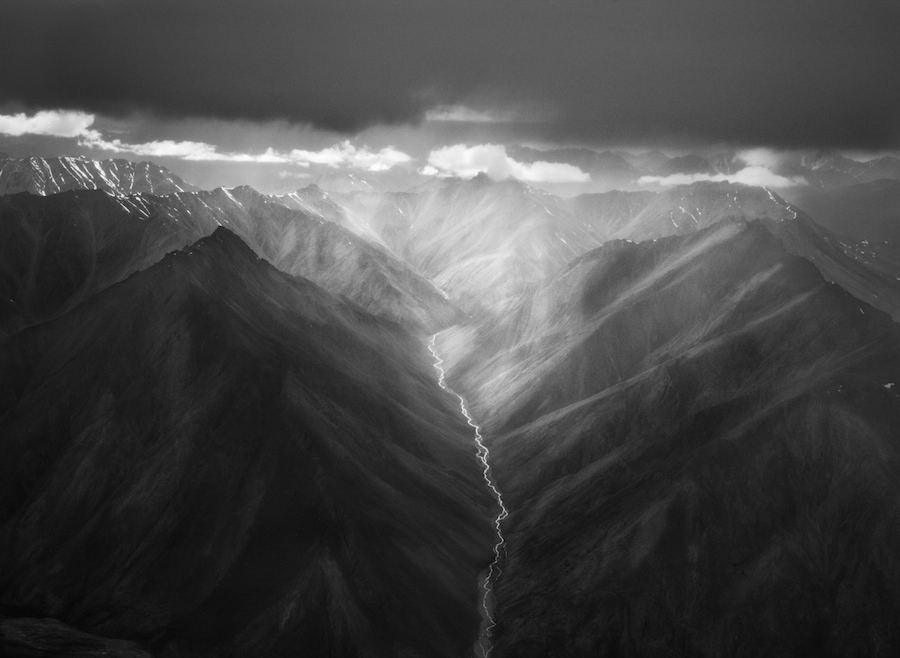
Now the earth was formless and empty, darkness was over the surface of the deep, and the Spirit of God was hovering over the waters. (Gen 1, 2-3)
CaixaForum Madrid is currently exhibiting 245 polaroids from the Genesis series by Sebastião Salgado (born in Minas Gerais, Brazil, in 1944) until May 4 — an exhibition which serves as a testimony to one of world’s most relevant contemporary photographers. He was awarded the prestigious Príncipe de Asturias de las Artes award in 1998 and during his career he has worked with some of the best photography agencies in the world, such as Sygma, Gamma and Magnum, before setting up his own, Amazonas Images. In this exhibition the photographer shows us the incredible, remote places he visited during his 32 expeditions lasting eight years, just before he turned 70.
The first thing you notice in Salgado’s photography is his powerful aesthetic sense; and his message slowly, gradually seeps through from the images, slow and gradual as elephant’s footprints on the soil. What you see in his photos is an area occupying 46% of the planet, and which to this day is virgin land — the same as it was on the first day, according to Genesis.
We decided to carry out more in-depth research on the theories and biography of this artist, certain as we were that someone like Sebastião Salgado should have much to say about an area of life and of the heart that is only open to those with a certain view of the world. Rhythm, Coherence, Passion. And we suddenly realize that it’s his inner journey that we’re really interested in.
Salgado is a man of clear vision and slow speech; his spoken English has an attractive Brazilian Portuguese hint to it, and his slow speech is not due to linguistic hesitation, but is the sign of a man who has seen much of the world and, more importantly, a man who observes mindfully. You see this in his careful choice of answers, and in how well he expresses them.
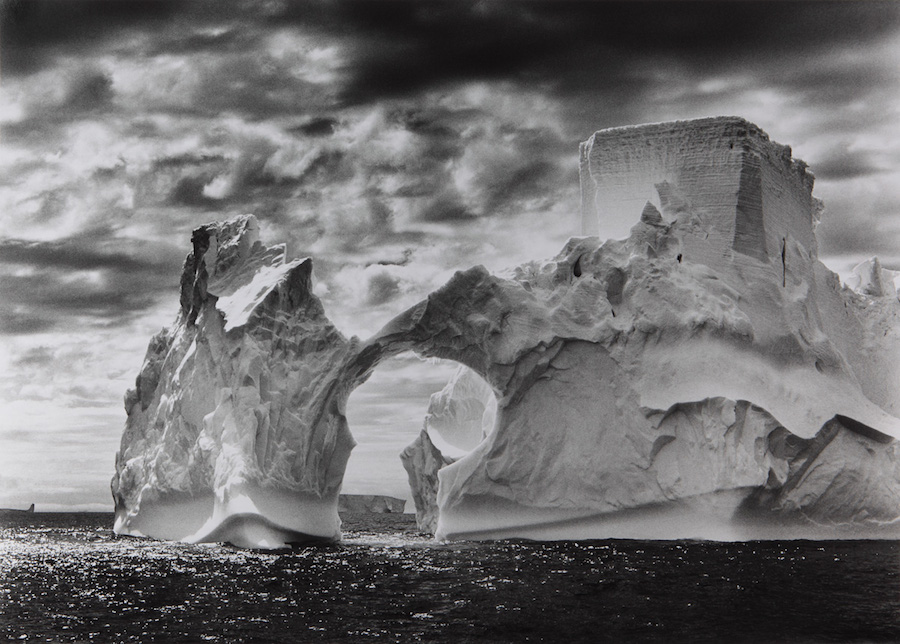
Like all good photographers, he has made a pact with slowness. “I walk a lot, I do some of my reporting on foot because I use the time to look around and to feel life, to feel nature. Slowly. If we don’t do it slowly, we end up burning out. Most often, the essence lies in the curves, in the twists and turns of the journey, not in the straight lines.” He compares photographers to hunters because they both live in waiting, fully immersed in their own authentic processes. “We must experience the pleasure of waiting.”
Before the Genesis project, Salgado had focused on photographing people, who he sees in a very different light, broader, more real: a vision we’d like to share with him. “I have learned that, at times, where there is life, there is also death. In Kazakhstan, the same phosphate used in agricultural fertilizer is also used as napalm, an effective combat weapon. In Bangladesh, the same fabric components found in jute are used both for the production of sacks for cereals as well as for the sand-filled sacks used to build trenches in wars. When the jute sack is attacked by bullets, it closes itself thereby keeping the sand inside and protecting the soldiers.”
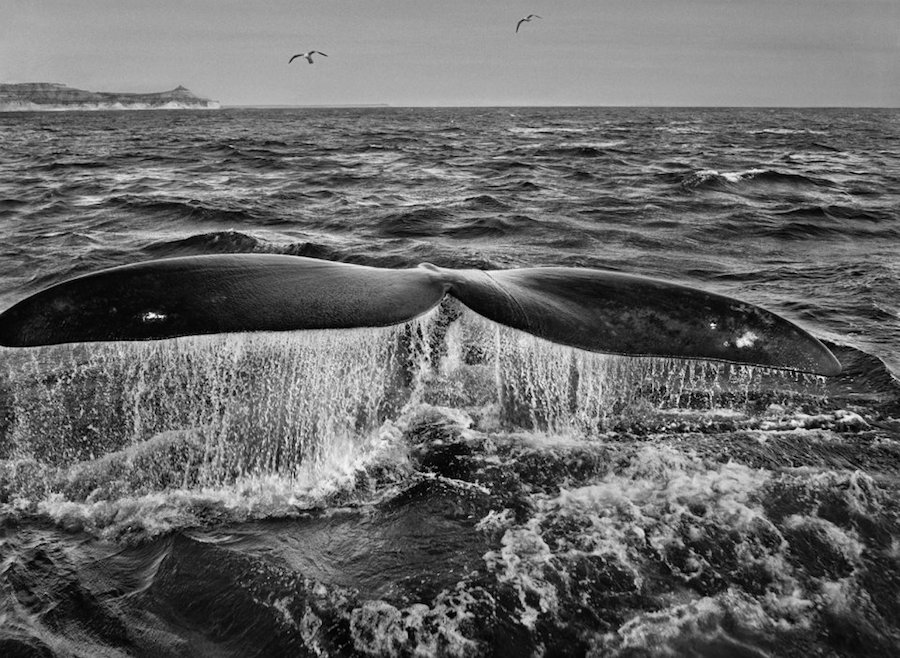
Listening to his life story, we realized that Salgado is one of those people whose vision of the world and of people we’d like our own children to have. By the time they reach the age when they’re overcome by a powerful natural curiosity about the world and they look for answers in stories and pictures, it would be wonderful to sit them down on the ground, and let them look up and listen to a wise man in front of them, whose eyes, the eyes of a hunter of slow images, are filled with real, genuine stories: “When I was in Ethiopia I travelled 850 km on foot. I discovered that that was the origin of all the fertile land from the banks of the Nile. I travelled to a Christian community, where Egypt’s first jews settled. It was just like landing in the middle of the Old Testament. Rather than being a journey of 850 km, I see it as a journey of 6,000 years inside myself.”
De Mi Tierra a la Tierra (From My Land to the Earth) (La Fábrica) is the title of his memoir, in which he talks about how the Genesis project begins in the Galapagos Islands, following in the footsteps of Darwin and taking the The Voyage of the Beagle as its guide. This is where Salgado learned that man is not the first species gifted with reason. He also describes certain unexpected situations he discovered in the natural world, for example that when the time comes for the common gannet to mate, it’s the female that chooses the male. The males introduce themselves before her, they dance, open their wings and show off their body. When the female makes her decision as to which male to mate, they fly off together for about 15 minutes. One by one, all the females follow this ritual of allowing the males to court them and then choosing one. For the duration of that season, this will be the female’s only mate and the father of its babies.
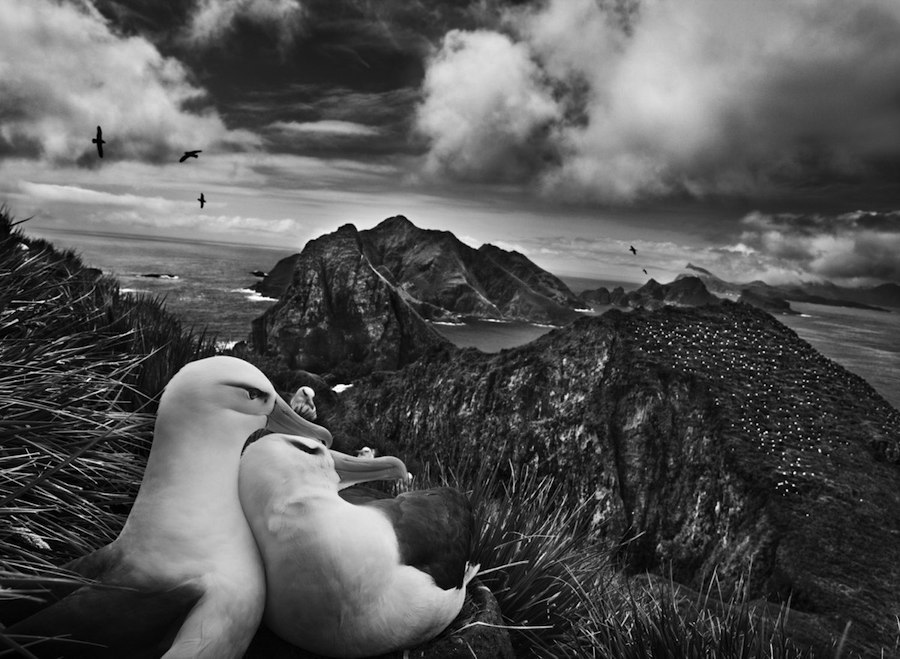
BLACK-BROWED ALBATROSS IN THE ARCHIPELAGO OF THE WILLIS ISLAND, SOUTH GEORGIA, 2009.
Although the Hebrew name of the first book of the Bible comes from its first word, Beresit (meaning “in the beginning”), its Greek name is Genesis, in reference to the “origin” of the world and of man. Salgado is a non-believer, yet his purpose with the Genesis project is to show “the dignity, the beauty of life in all its aspects. And of course the fact that we all share the same origin.” He told us about the time spent on the Galapagos Islands, about how he once noticed the front legs of an iguana and how his imagination led him to see in them the hand of a Medieval warrior, clad in chain mail. The incident made him suddenly aware of the similarities between species, and led him to decide on the name of the project: Genesis.
Looking at this photo while we were passing through the halls in front of the Botanical Gardens, we all had the same doubt: Is that King Arthur’s hand? Or it could it be Ironman’s?!
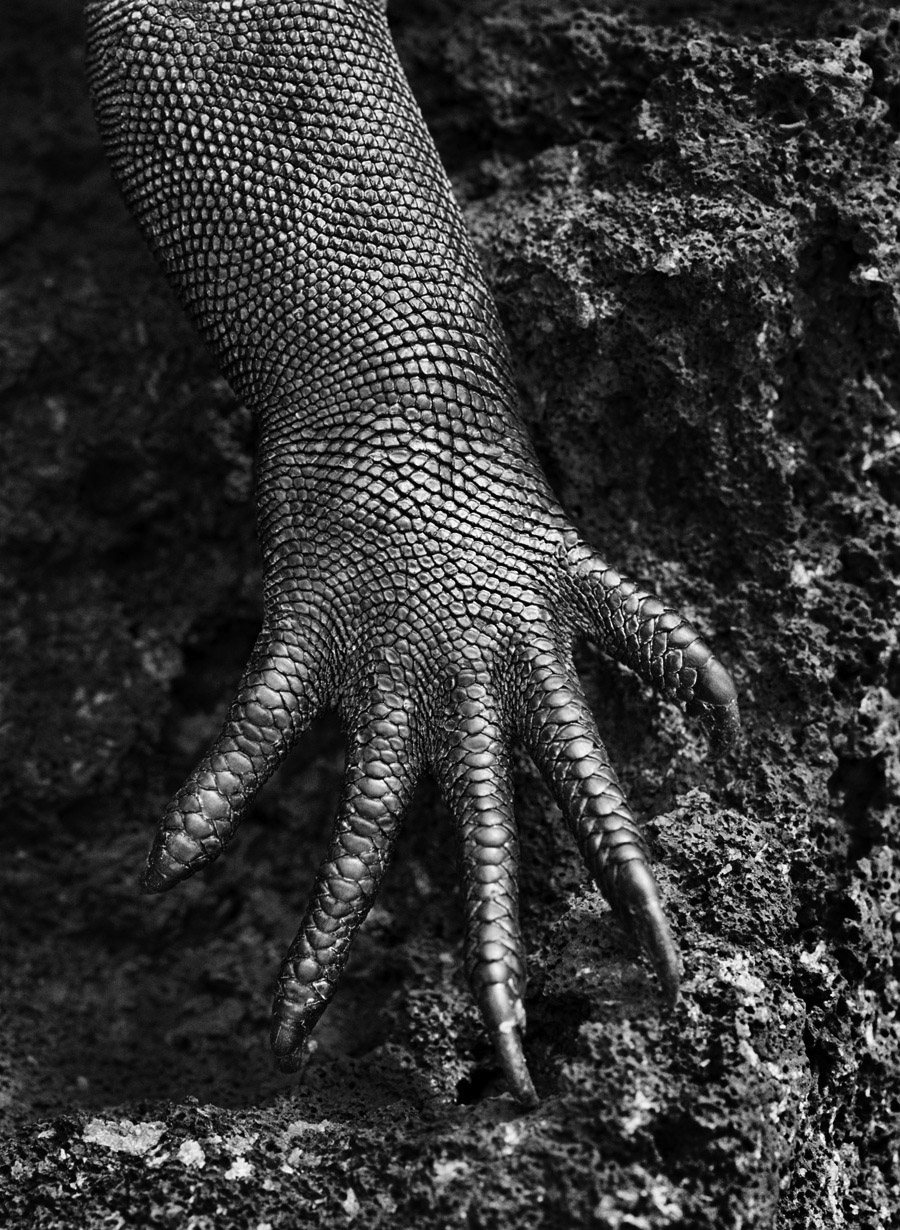
SEA IGUANA, GALAPAGOS ISLANDS, ECUADOR, 2004
Salgado was born on a farm in the Brazilian mainland, where he learned to observe and to love the lights around him; he grew up under densely overcast skies and storms through which light would filter. He spent his childhood among large expanses of land, streams, rain seasons and long seasonal migrations among thousands of oxen.
At the age of 20 he fell in love with his other half, Lélia. They arrived in Paris together in 1970 — they were fleeing the political turmoil in Brazil at the time. During his first European summer and in a Two CV, they drove all the way to Geneva just to purchase some photographic material at a better price. Lélia had to photograph buildings for her classes at the Faculty of Architecture. Although neither of the two had any previous knowledge of photography, they both instantly fell in love with it. And that is how photography became his way of life. He discovered Africa while working as an economist at the World Coffee Organization — he became passionate about the continent and wanted photograph it constantly. He gradually left his day job and began to consider himself a full-time photographer.
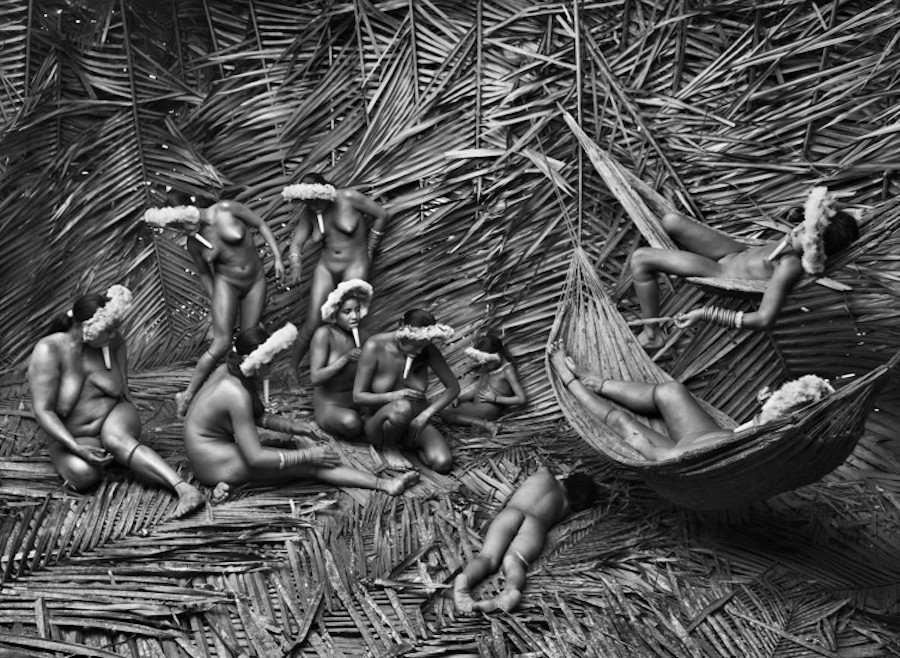
As always together with Lélia, they began his other great project: O Instituto Terra. The Brazilian coast, right from its origin, has been covered by an atlantic jungle — around 3,500 km inland — and the land belonging to Salgado’s parents once belonged to this ecosystem. Once political amnesty was reached, the couple decided to return to their country, but on arriving they found themselves having to deal with the issue of deforestation: the well-known perobás (a variety of oak) and other species of trees had been cut down, the fertile lands once covered in pasture had been destroyed, and the flow of water had been let loose on the area with no barriers in place, causing inundations. “Lélia said to me one day, Sebastião, let’s replant the trees” and without any botanical knowledge nor economic means, and feeling very much like city-people in a natural area they didn’t even live in, they bravely decided to embark the adventure. After six months they were involved in the replanting of 2.5m trees of the varieties found in the original jungle, and in the creation of the first Brazilian National Park located in a completely destroyed piece of land. Since then and to this day, the land belonging to his parents has been protected. And with the trees came the animals, such that his beloved childhood became a paradise once more, almost more beautiful than the one he remembered. This spectacle of the recreation of the circle of life was what made Salgado decide to capture with his camera the natural beauty of those places on earth where man has not yet set foot. “Genesis is my love letter to nature.”
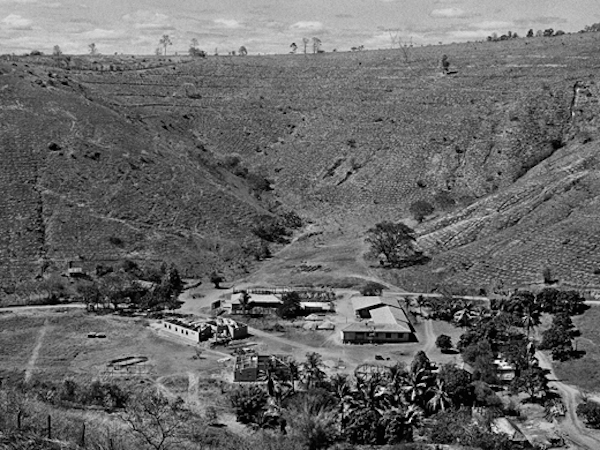
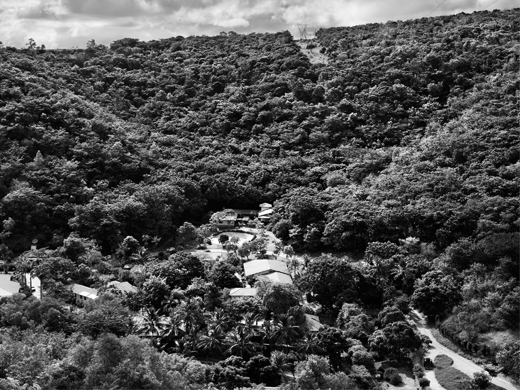
O INSTITUTO TERRA, MINAS GERAIS, BRAZIL, in 2001, when the replanting of the Brazilian atlantic jungle began, and in 2013 having reached their goal.
“Photography is my life, it’s my way of living with meaning."
During the making of Genesis, Salgado transitioned from analog to digital photography. Between 2004 and 2008 he used Pentax 6458 cameras and medium format, 4.5 x 6.
He uses monochrome with great dexterity, offering a whole new vision of black and white photography; the tonal variations of his work, the contrast between light and darkness, remind us of the Baroque period and of the works of the great masters of chiaroscuro, such as Rembrandt and Georges de La Tour.
In black and white we seek greater impact. When I was working in colour, the beauty of the blues and the reds seemed like they were erasing the emotion of what had been photographed. It diluted them. With black and white and all its range of greys, Salgado forces us to concentrate on the looks, the attitudes, and the density of the people: “When we see an image in black and white, it pierces us, we assimilate it and, subconsciously, we colour it.” For the photographer the moment of pressing down on the shutter release is unique and magical. Photography is the interpretation of a work in which various elements are linked together: people, the wind, the trees, light, the backgrounds… But in order to see the photography, the photographer must integrate completely with what is around him. It’s wonderful to read how Salgado describes those moments of bliss just before the shutter release: “You know you’re about to witness something unexpected. When you’re at one with the landscape, the moment, the image starts to construct itself in front of your eyes. In order to see it, though, you must be part of the process, and once you achieve this, all the elements start to work together with you… I love just sitting there for hours watching, framing, working deeply with light… You’ve got to love what you do.”
{youtube}nHJWgQxTous|600|450{/youtube}
To conclude, here’s an homage to two geniuses and their images.
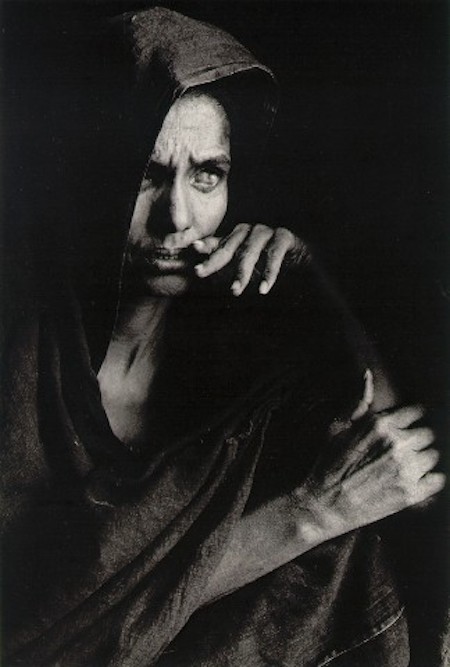
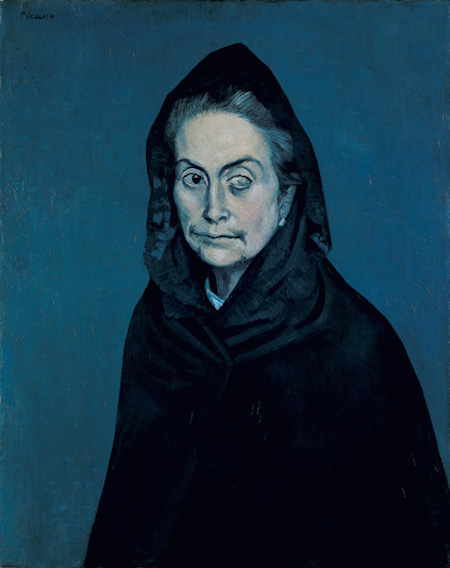
Sebastião Salgado, Ciega a causa de las tormentas de arena (Blinded by the sandstorms), Mali, 1985. Pablo Picasso, Celestina.


